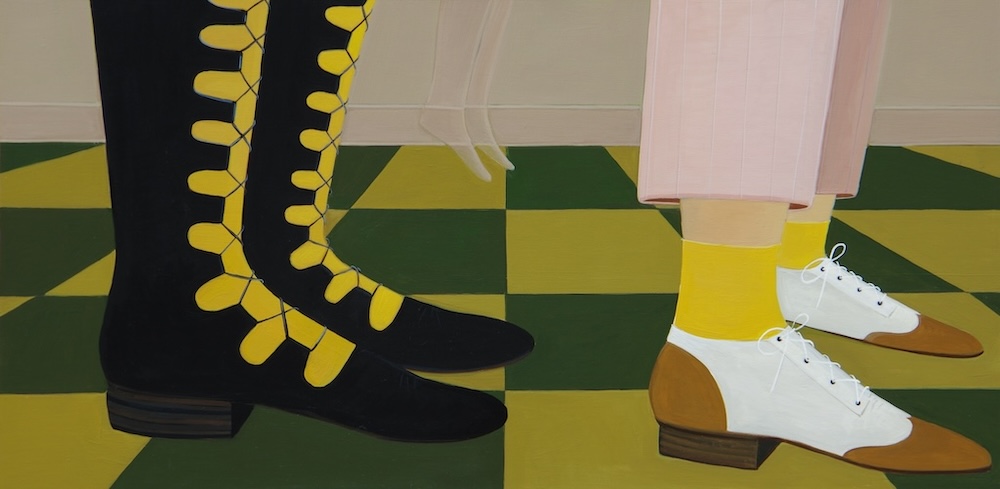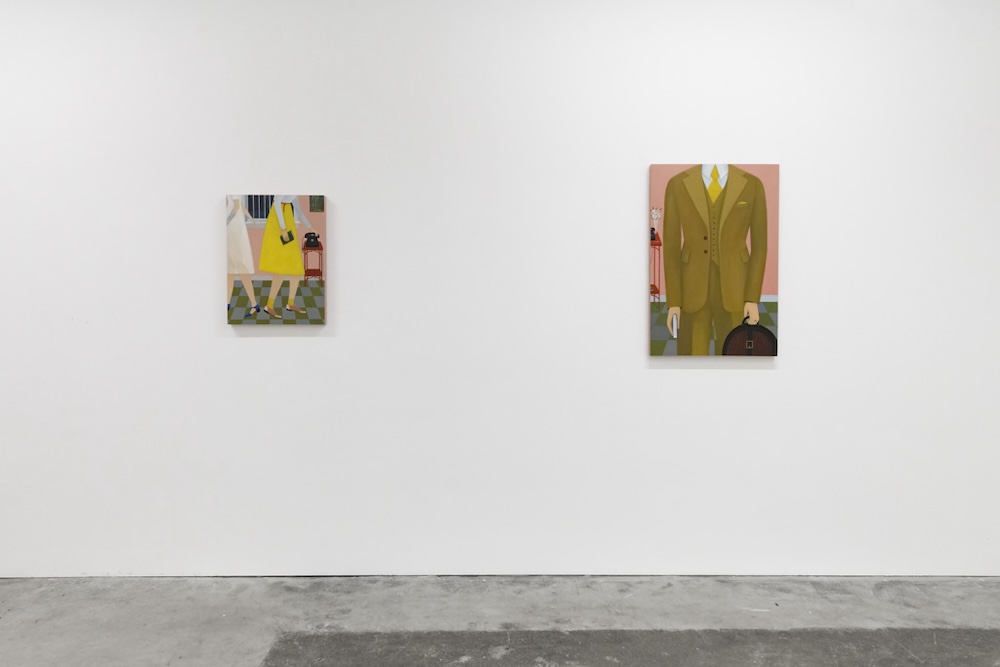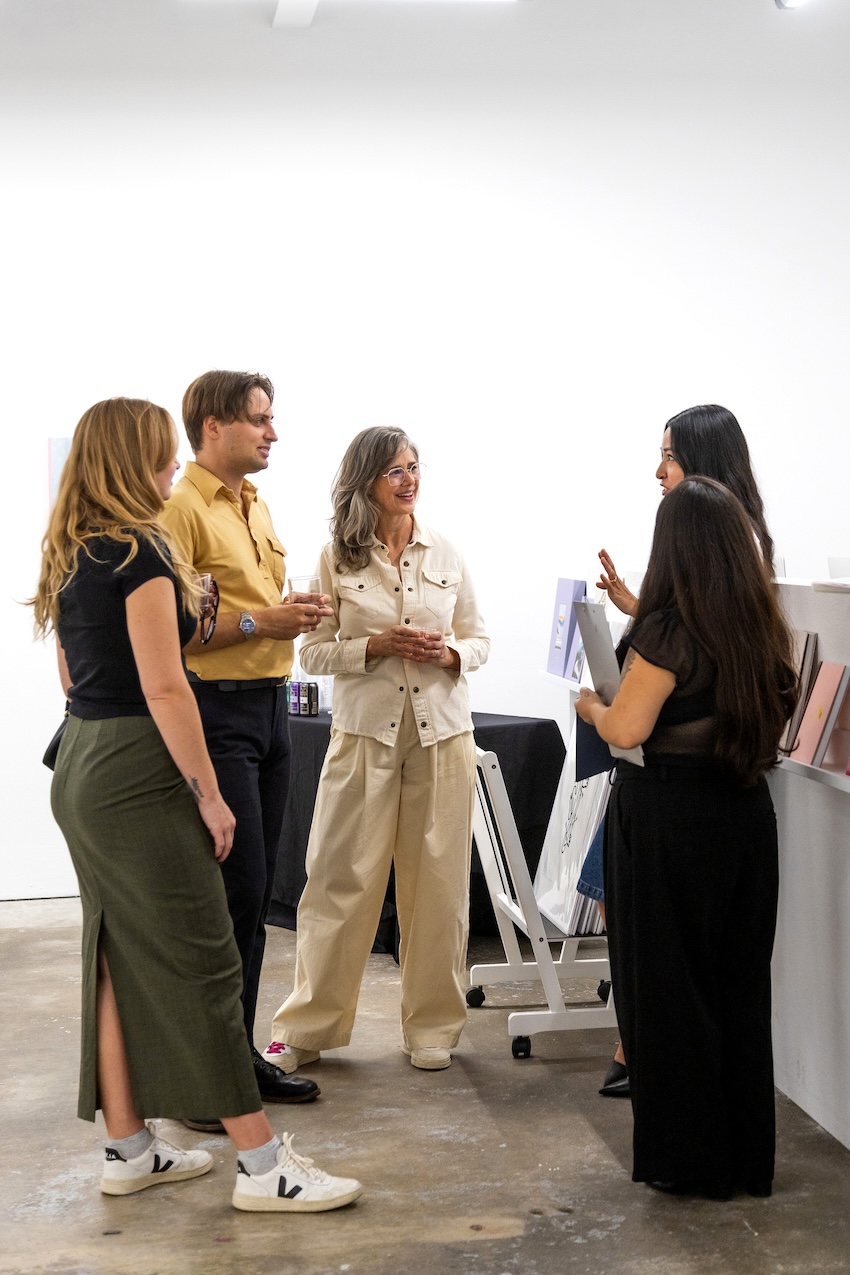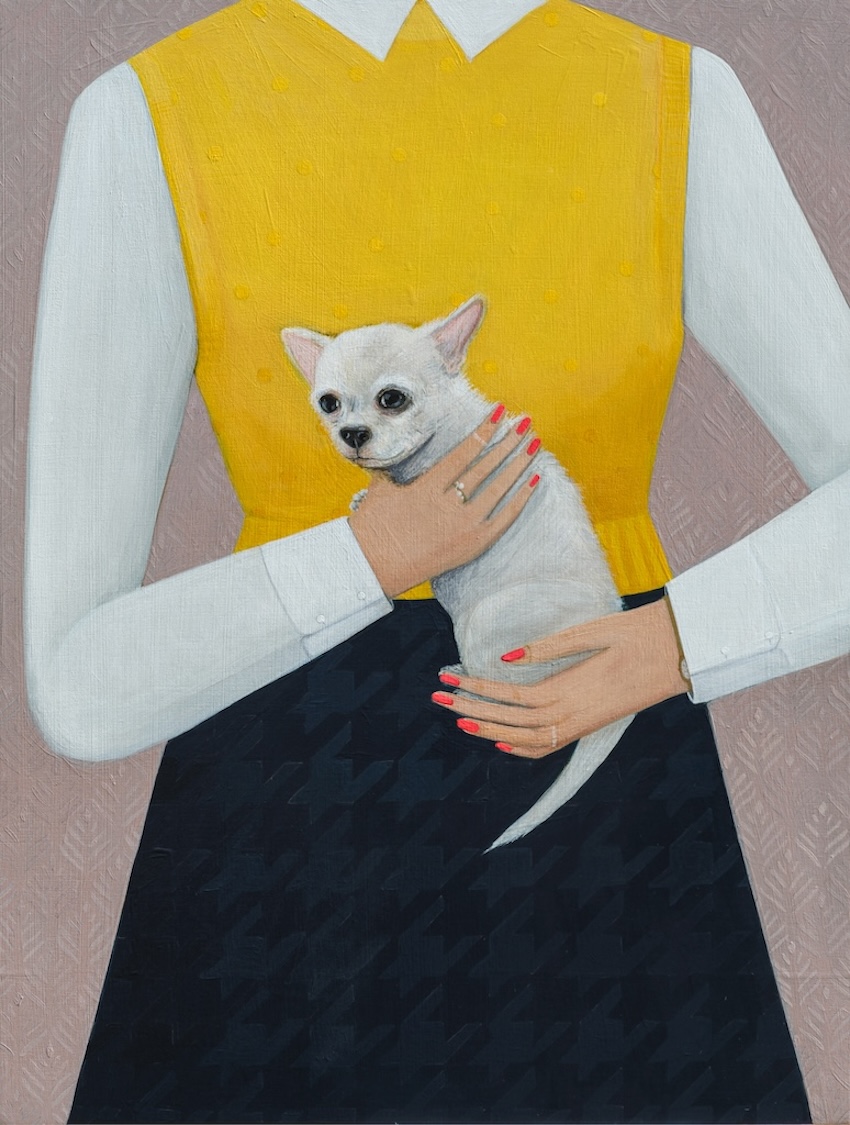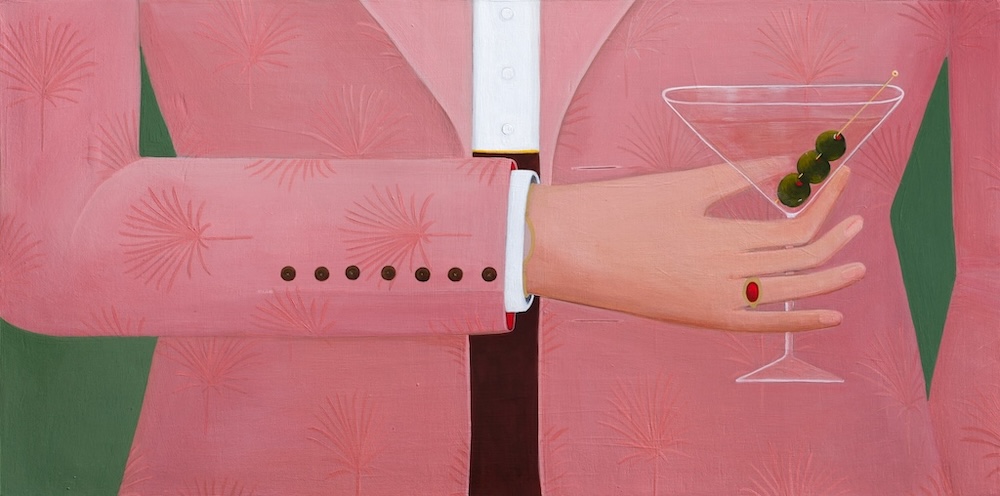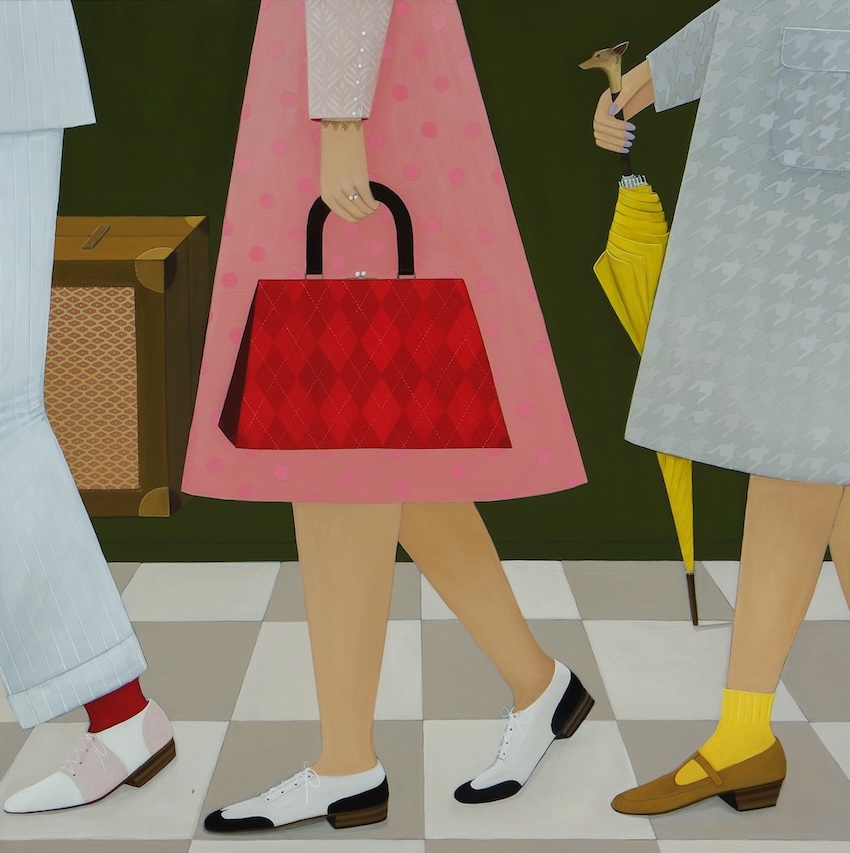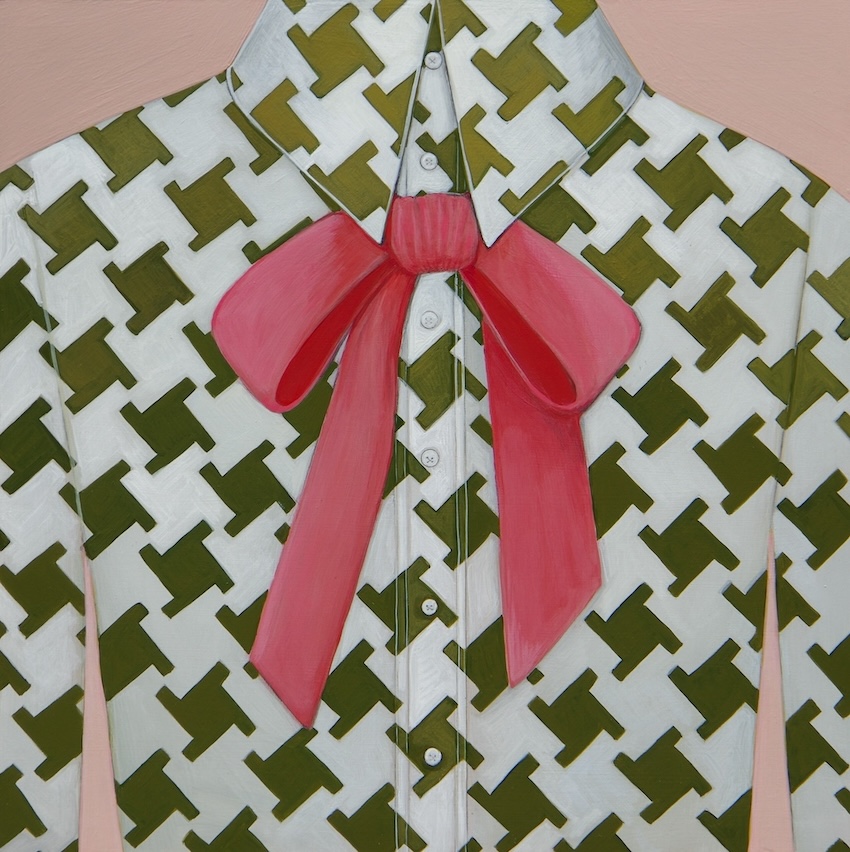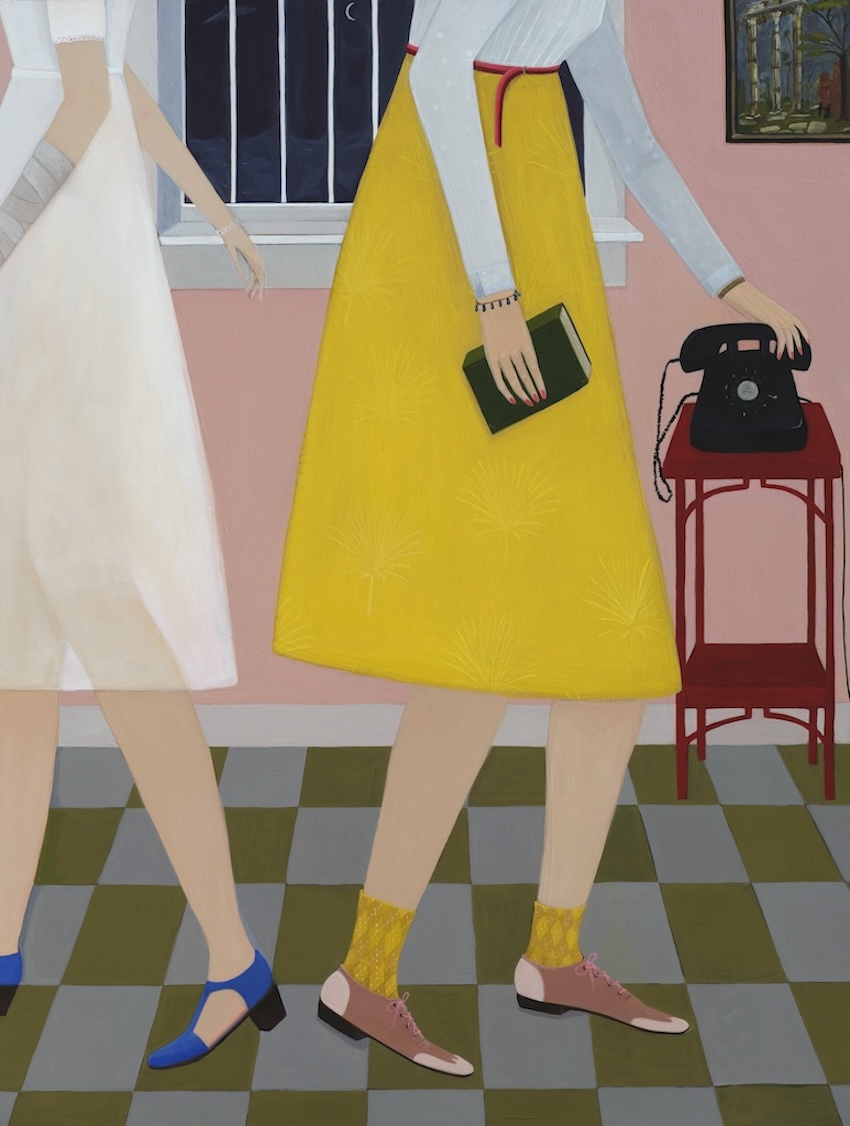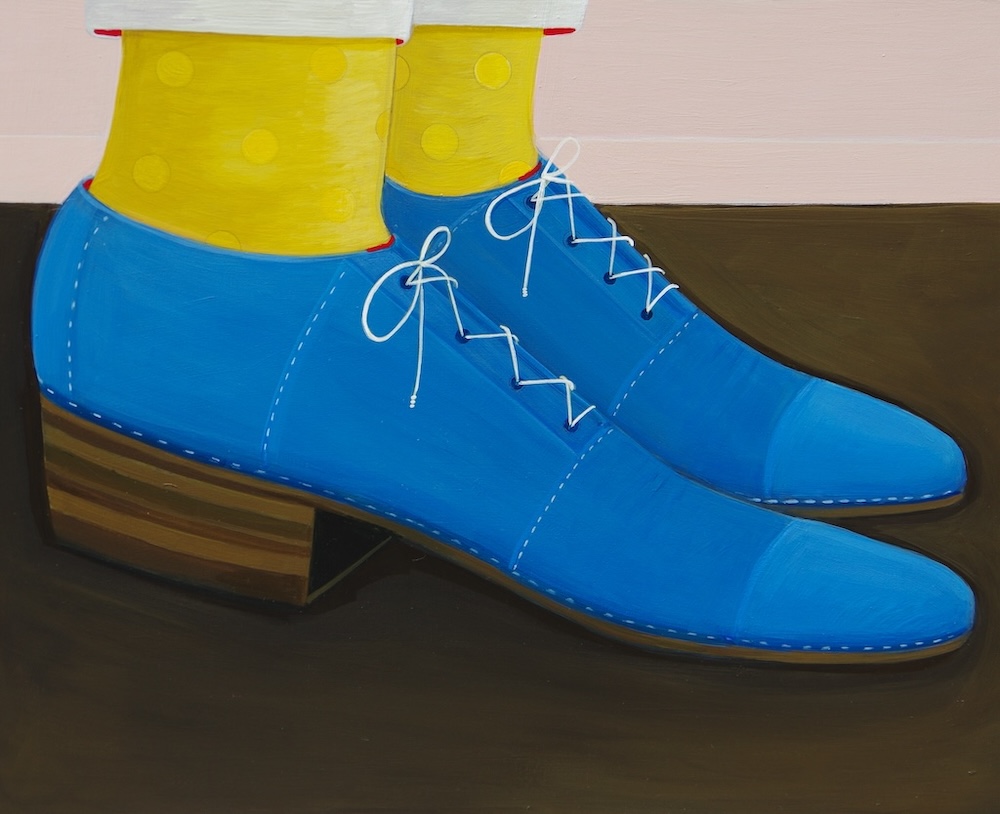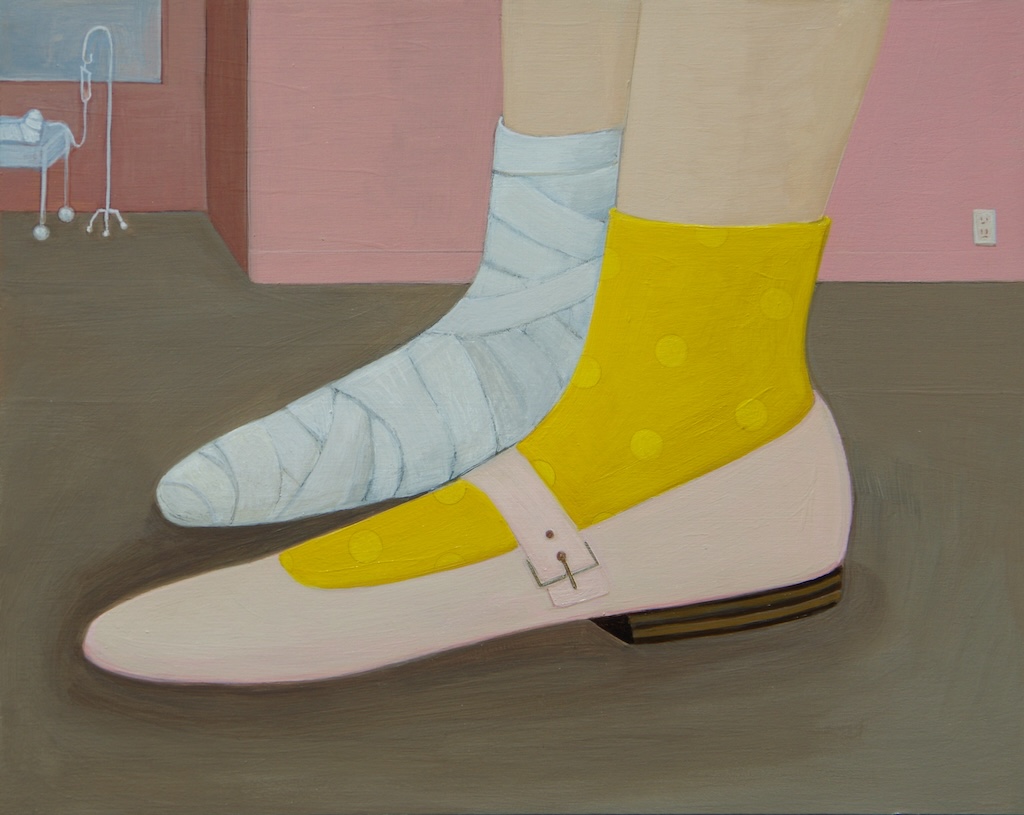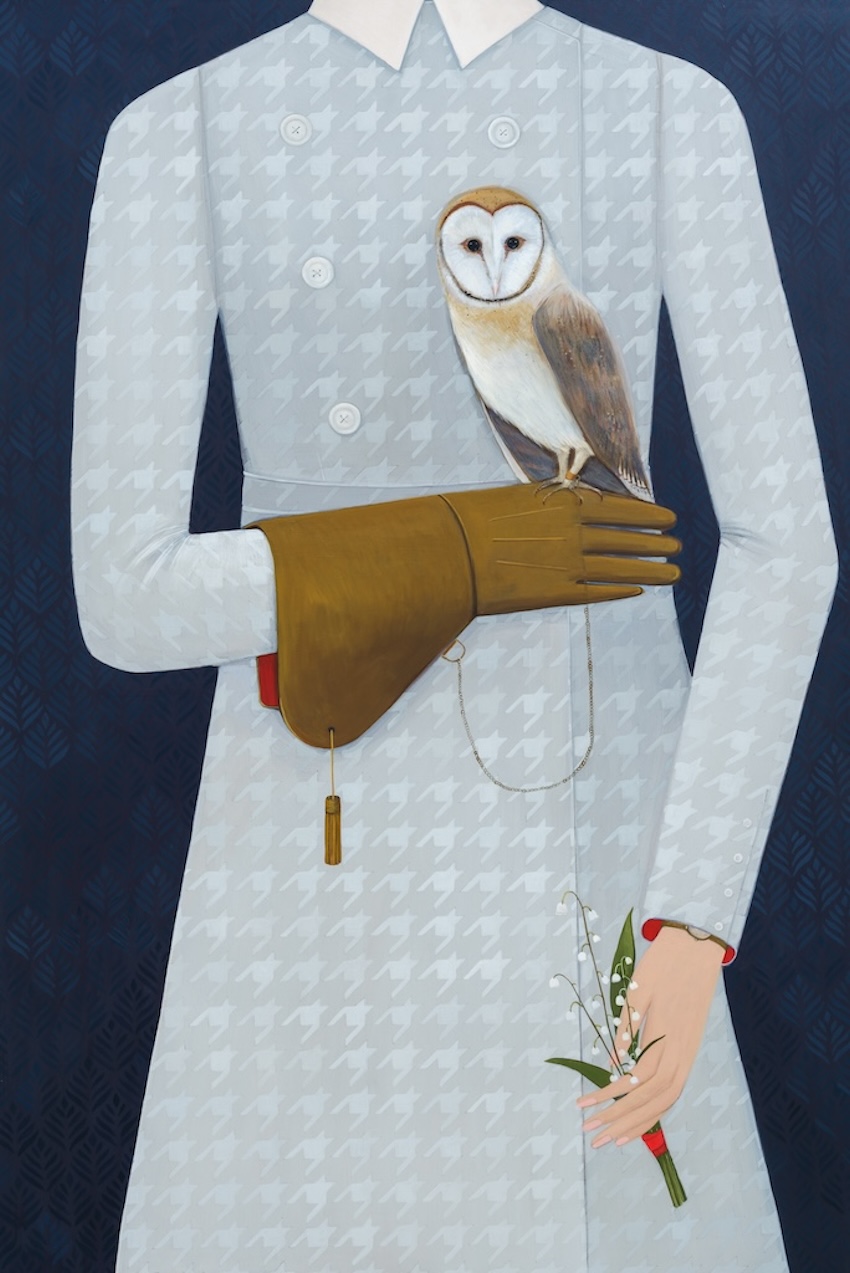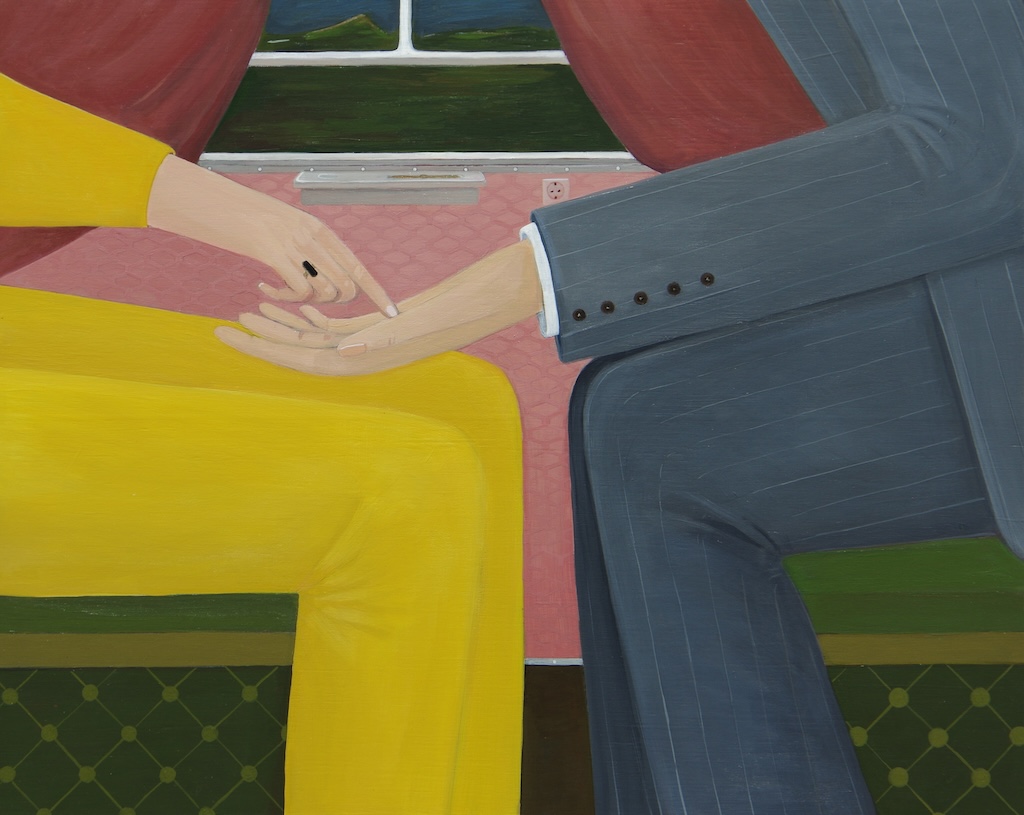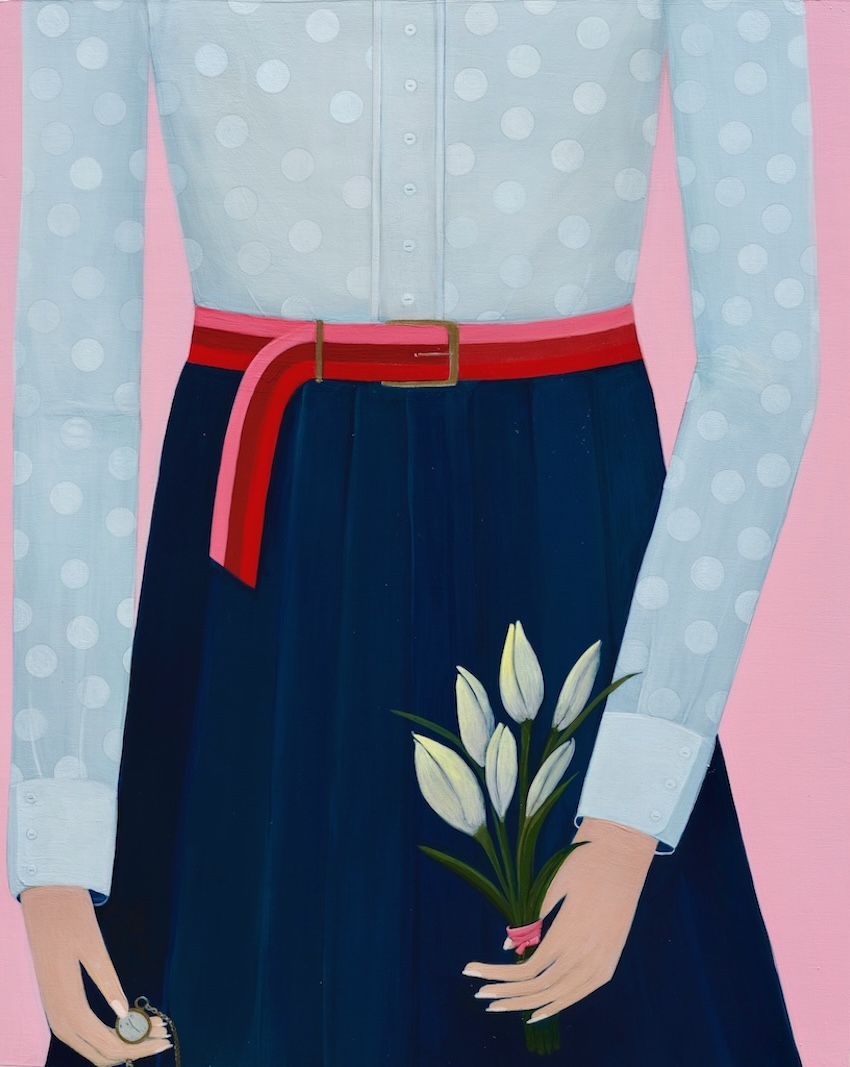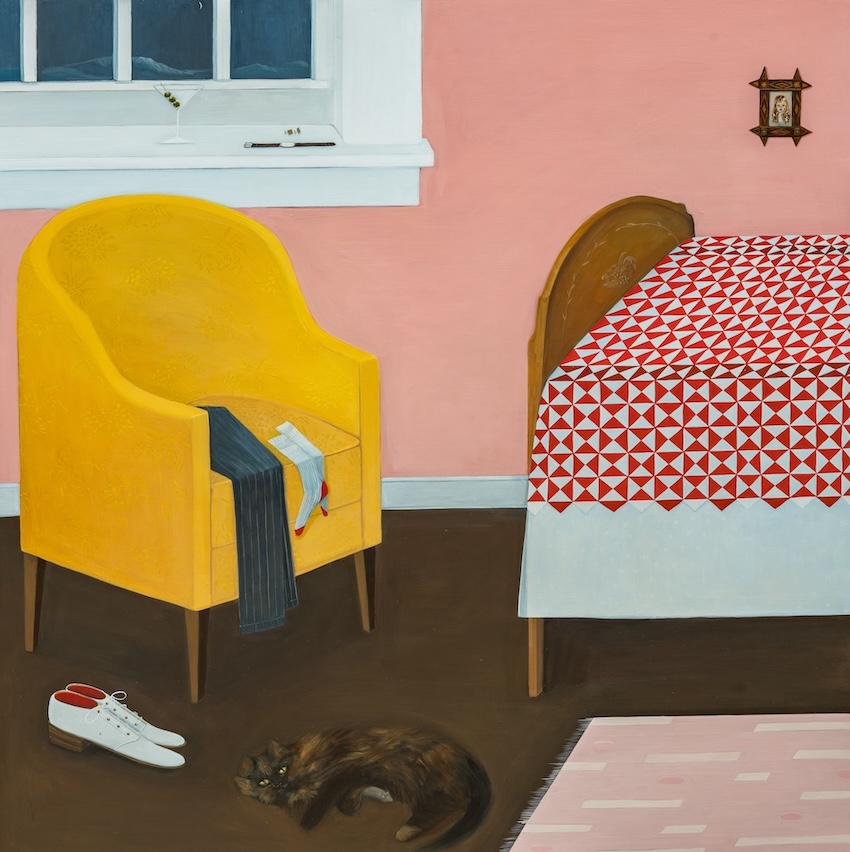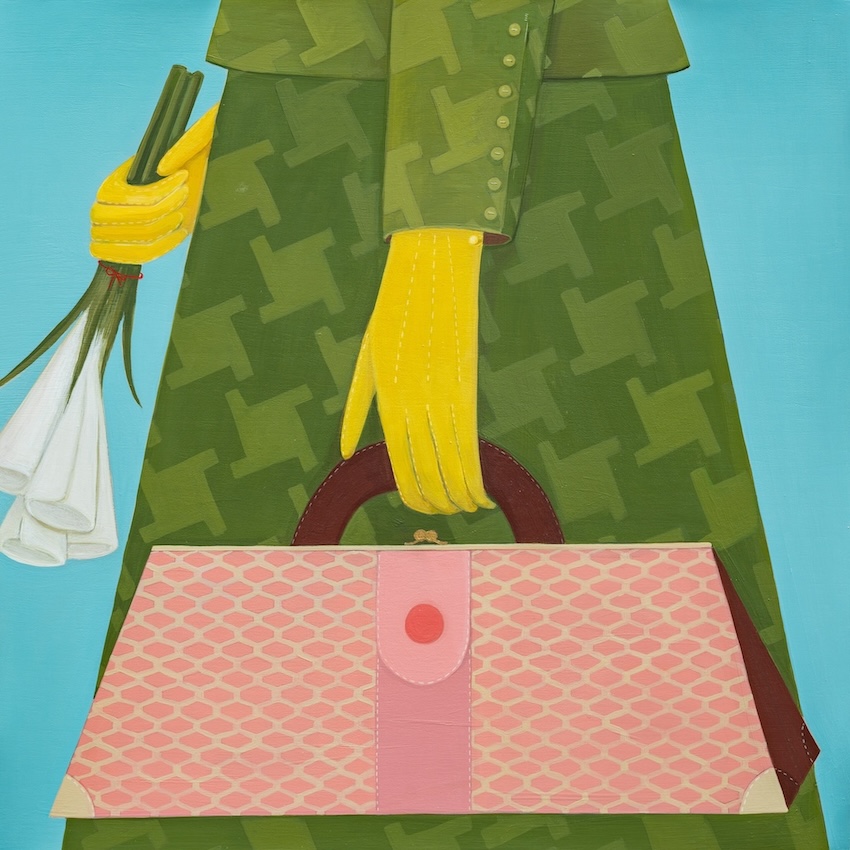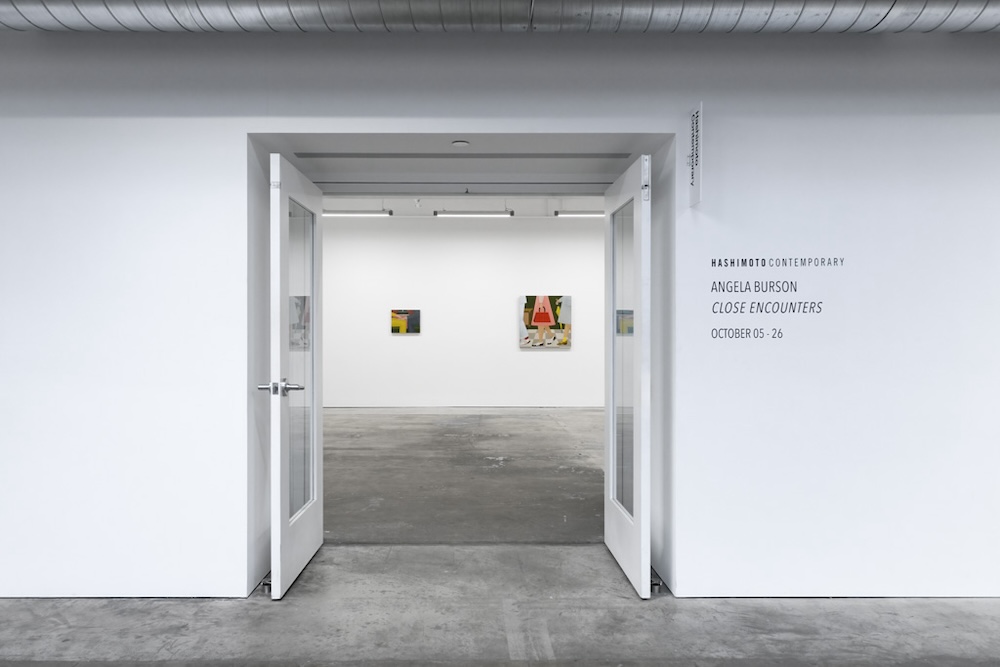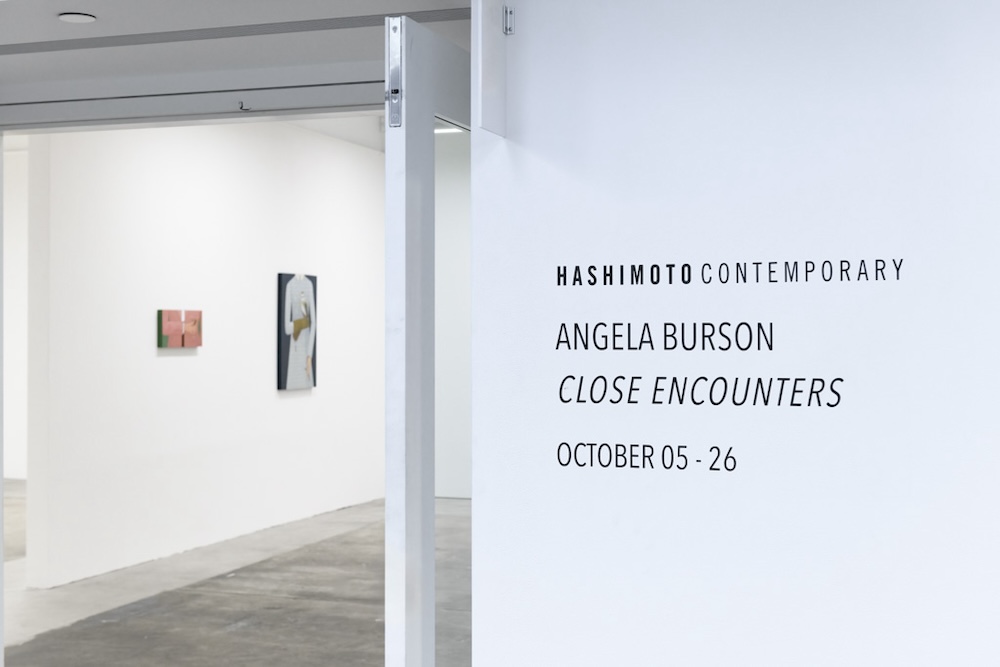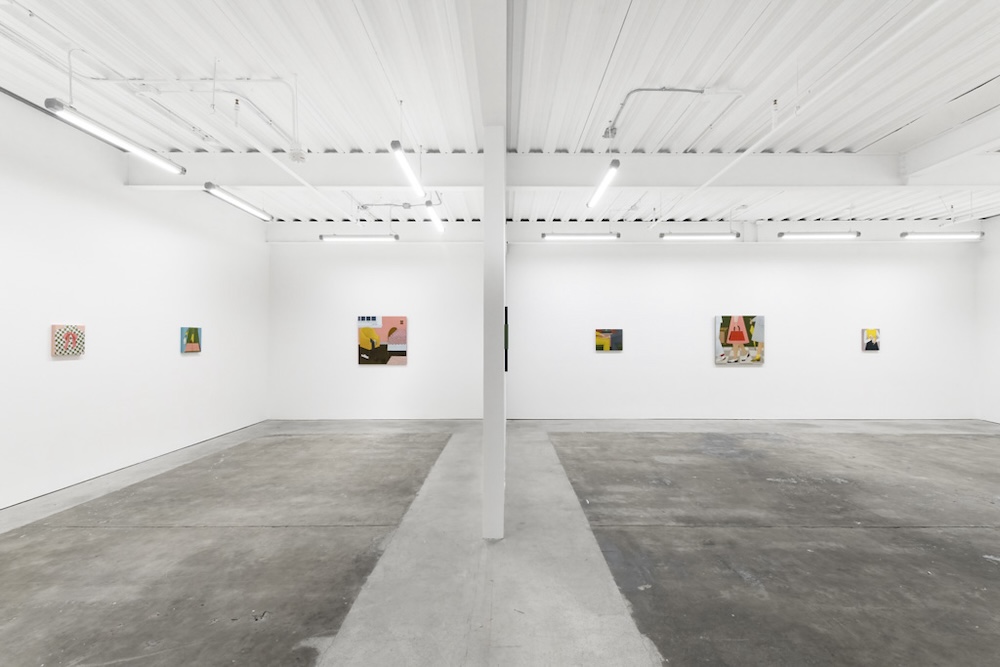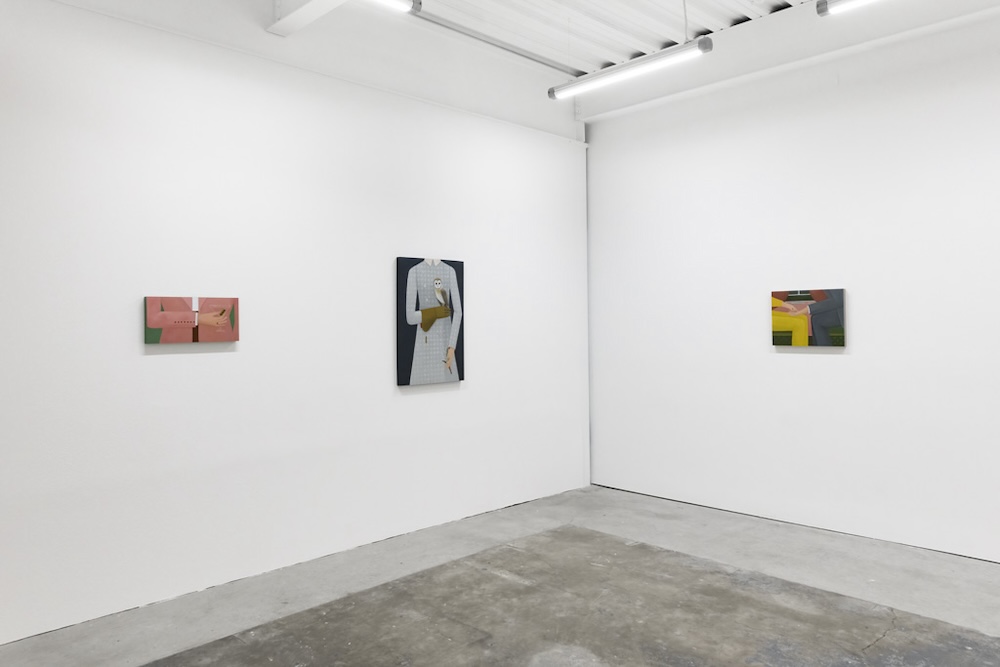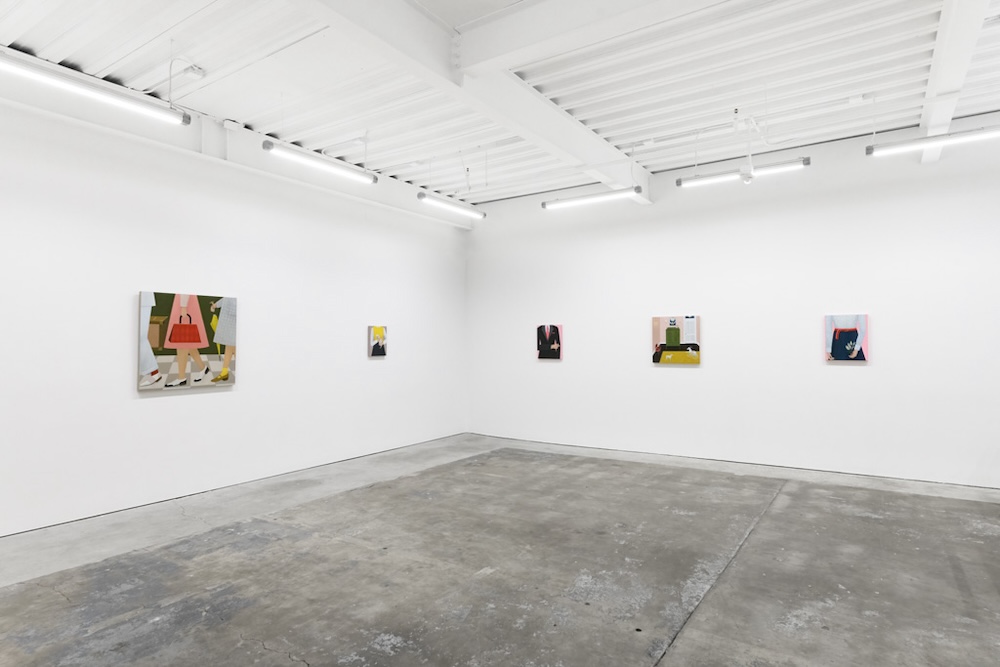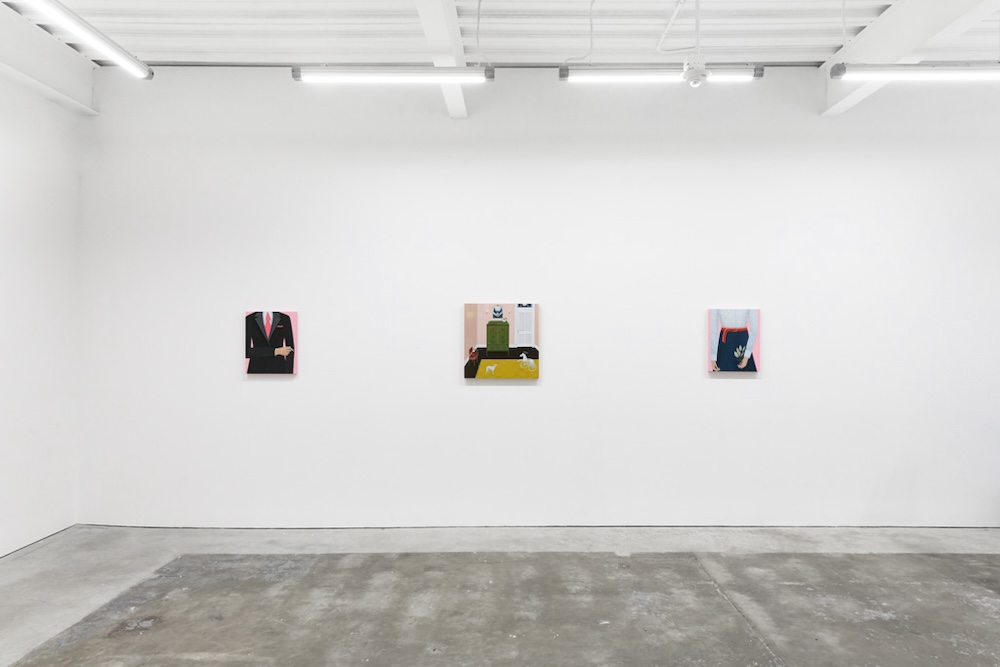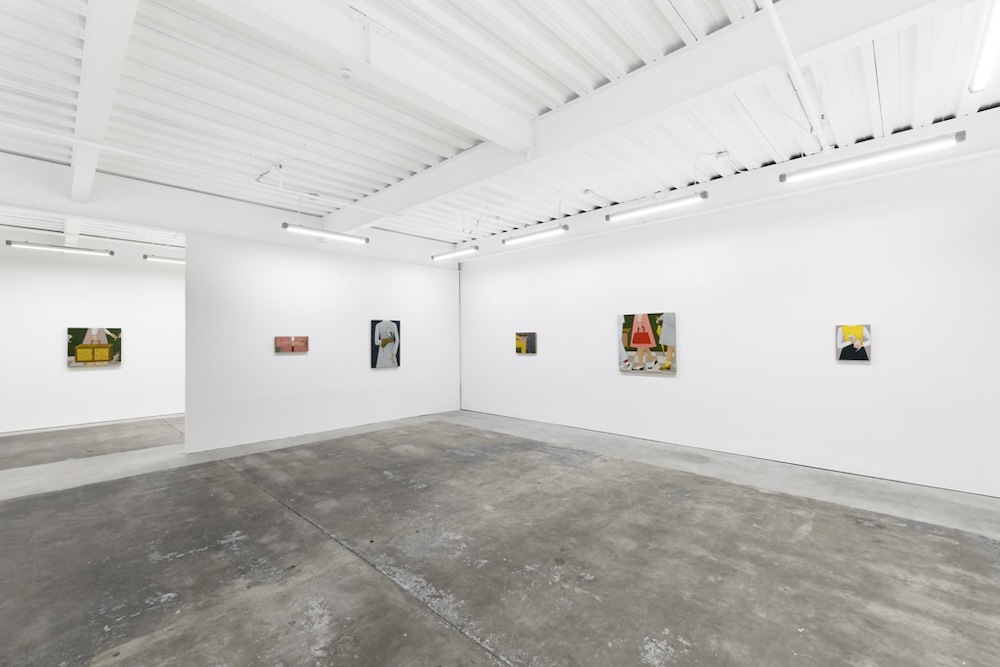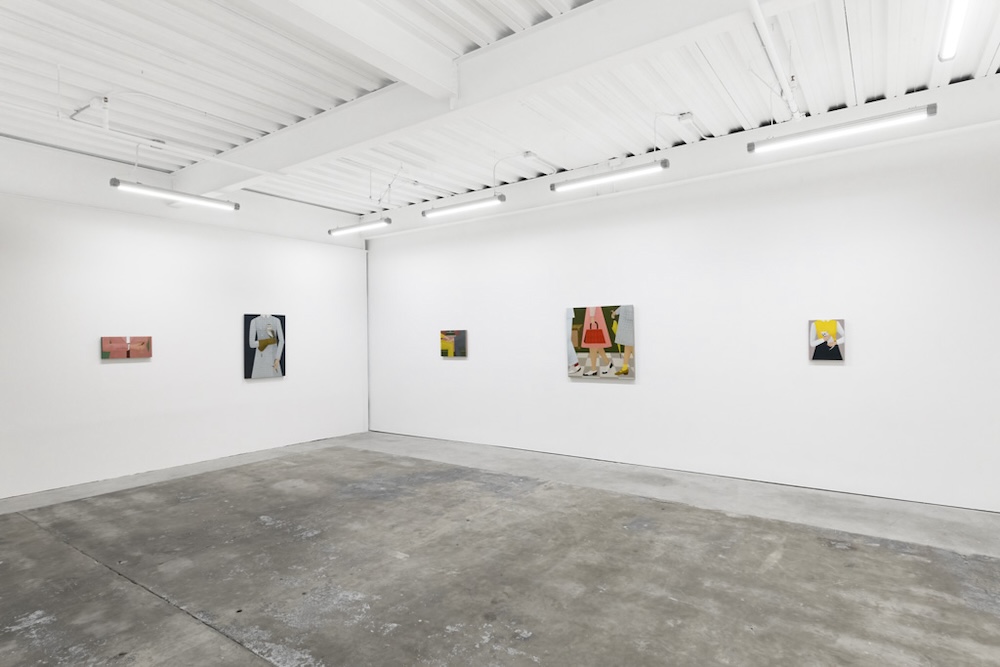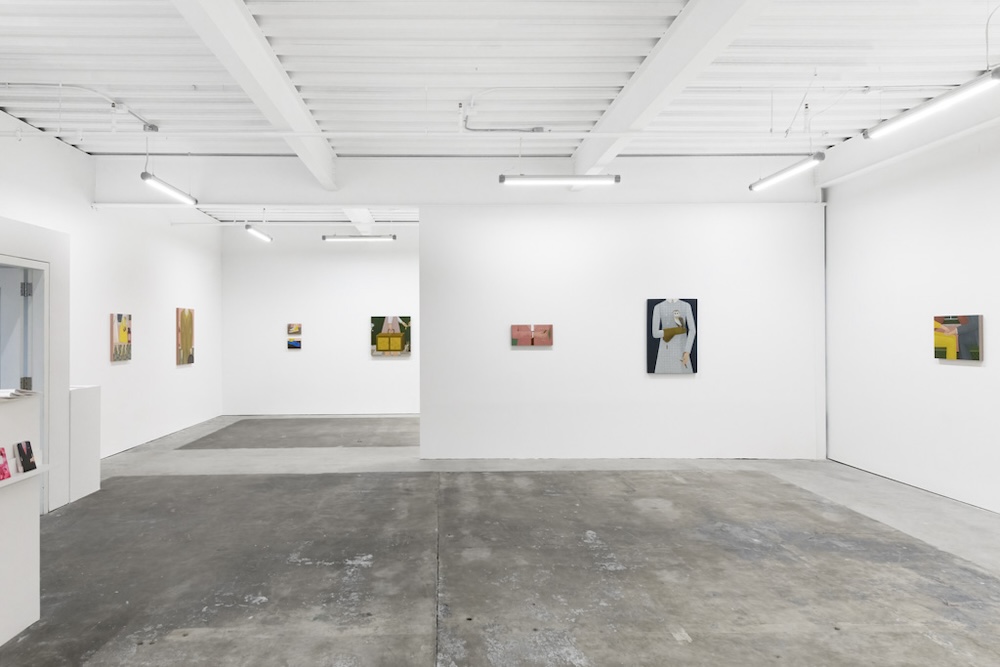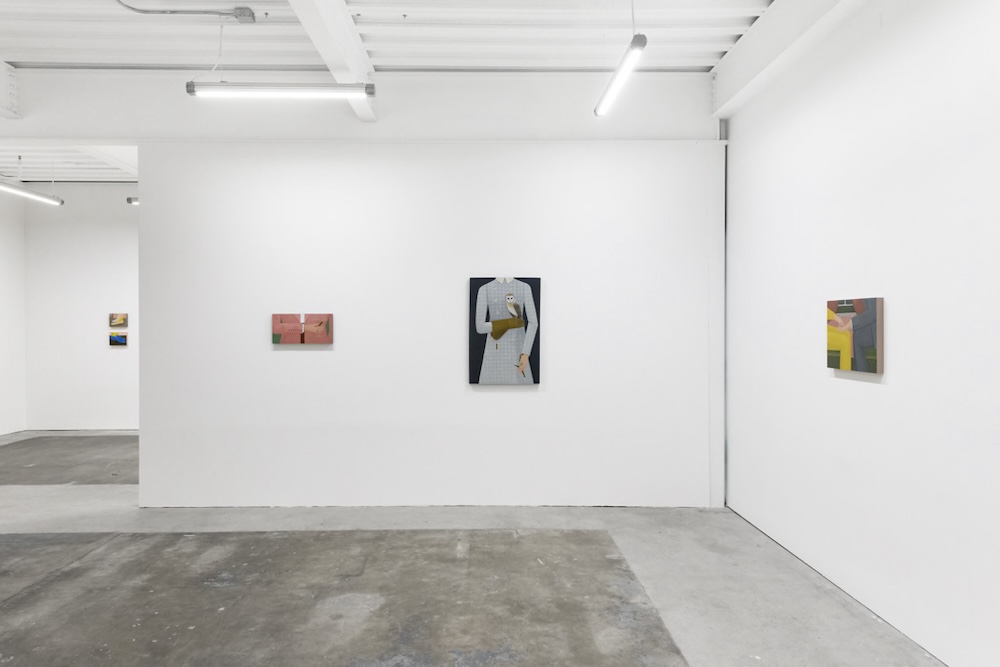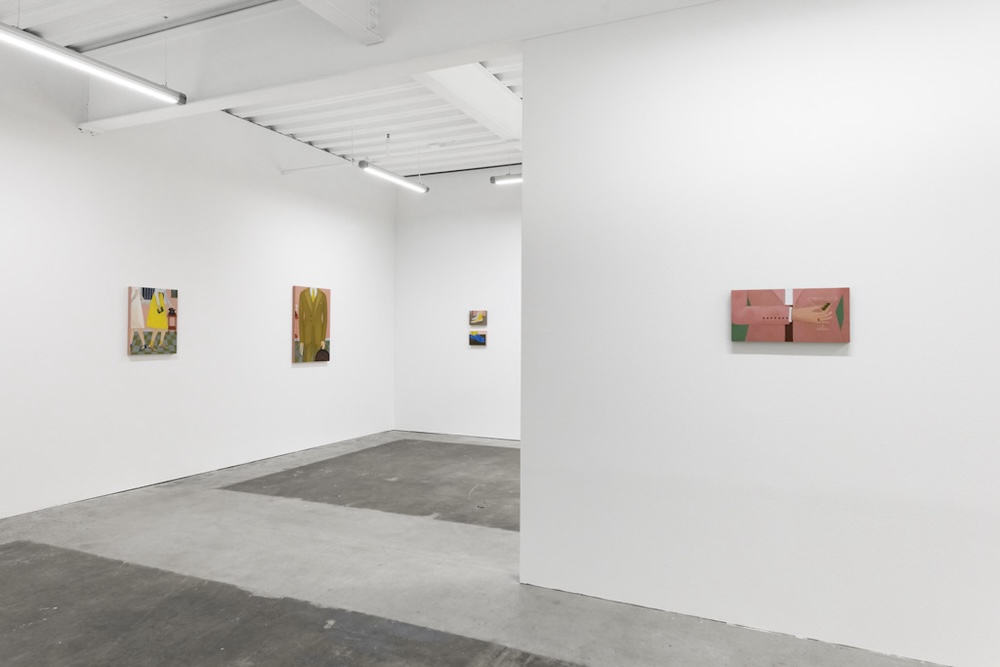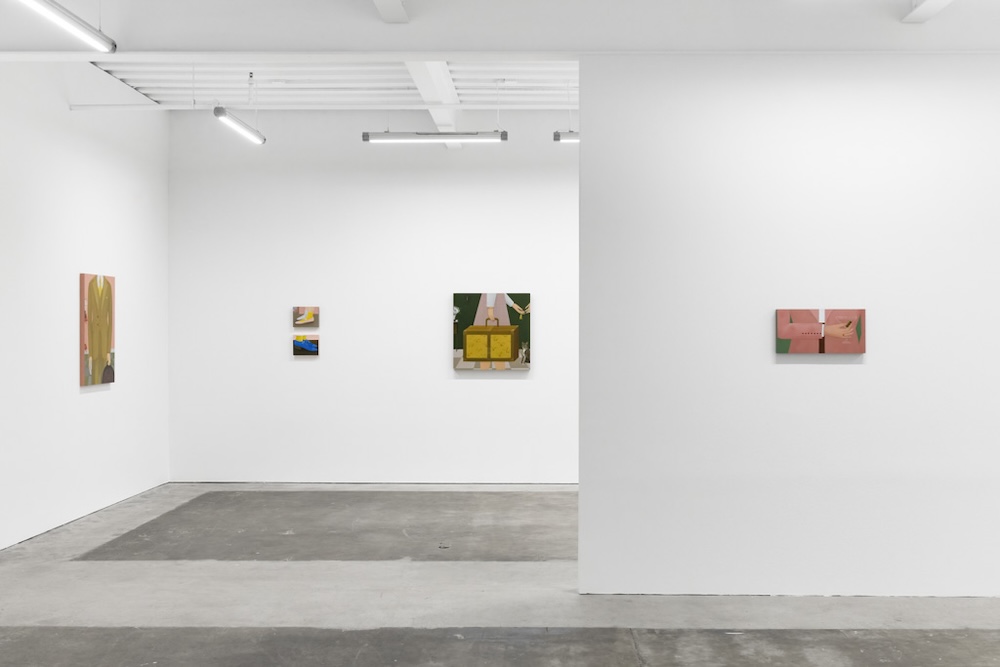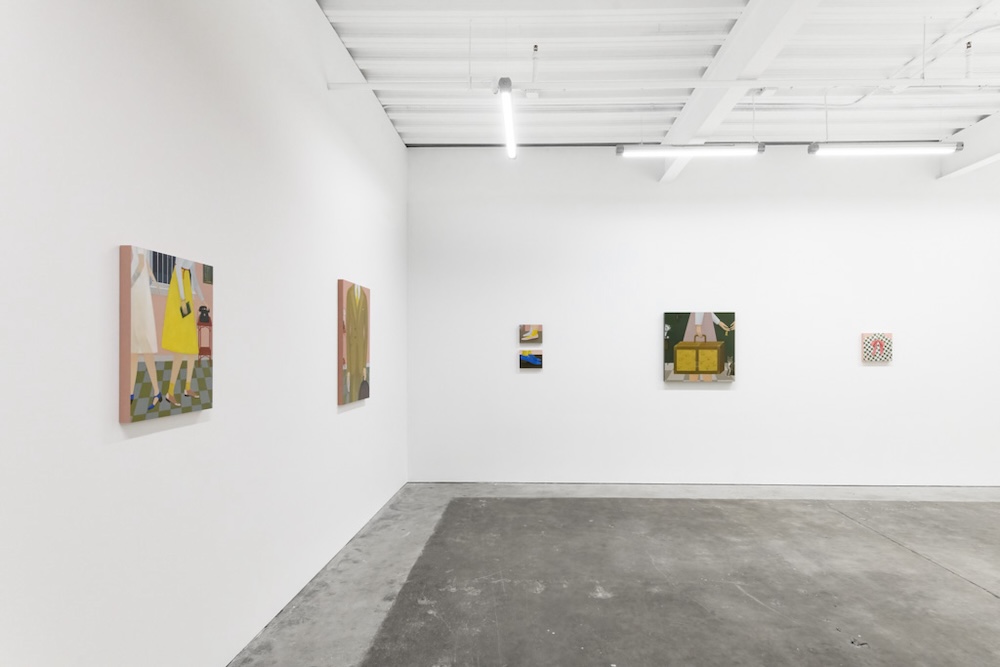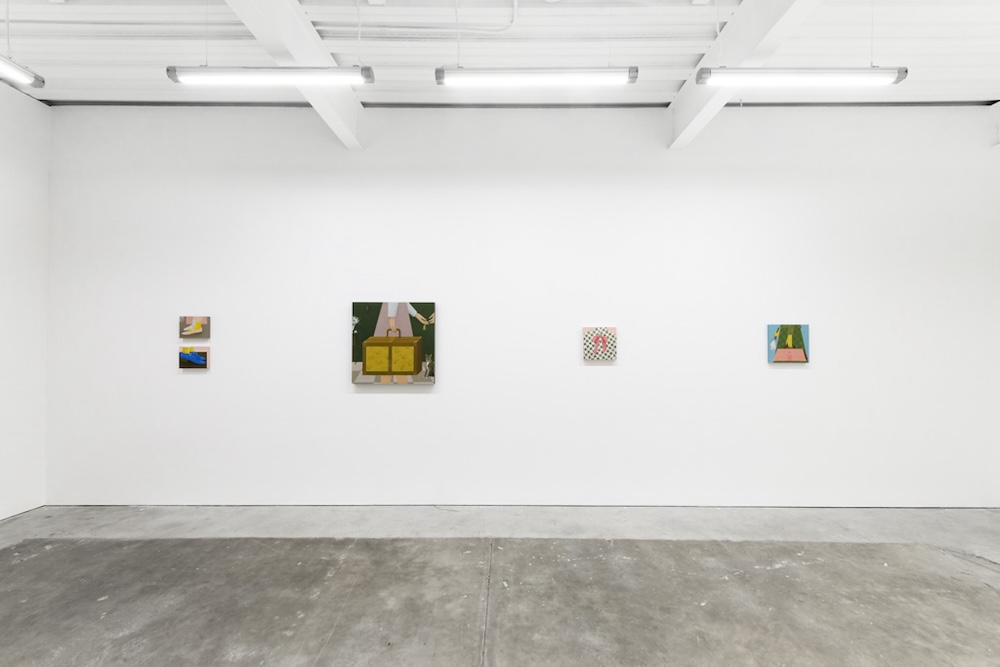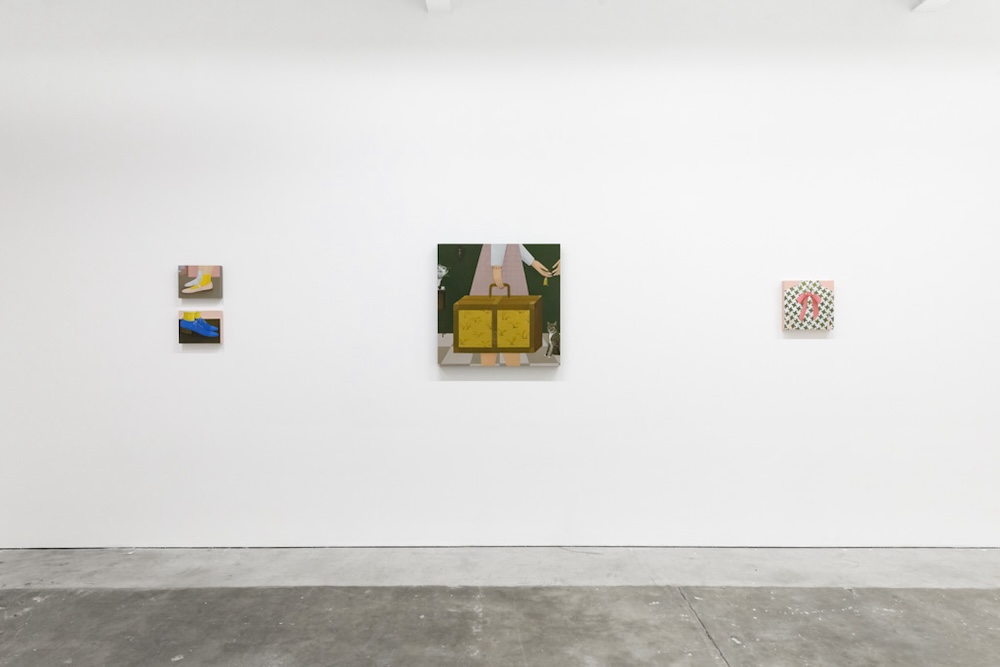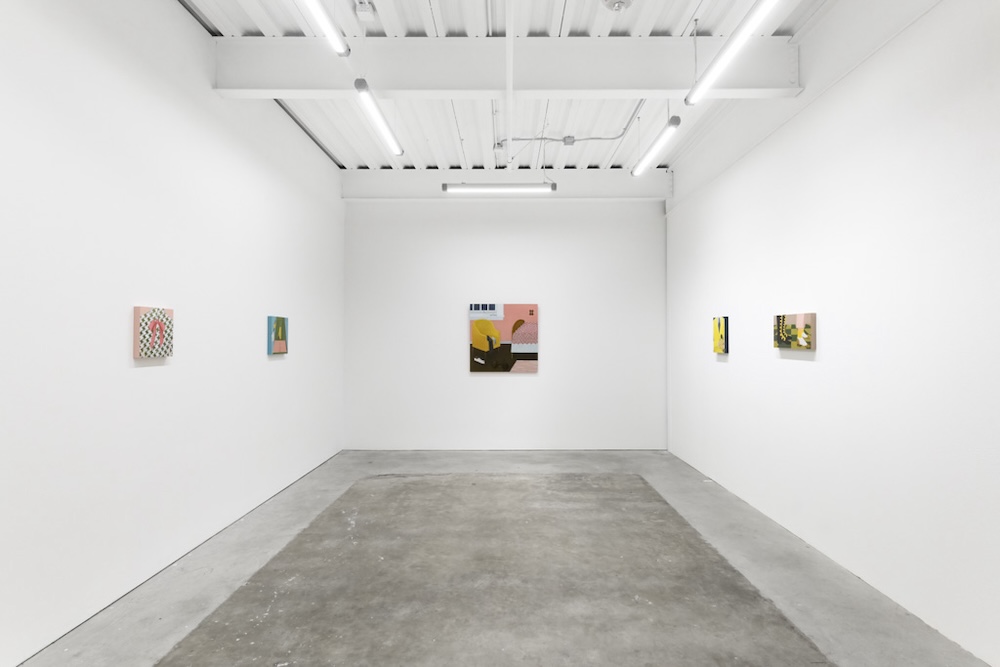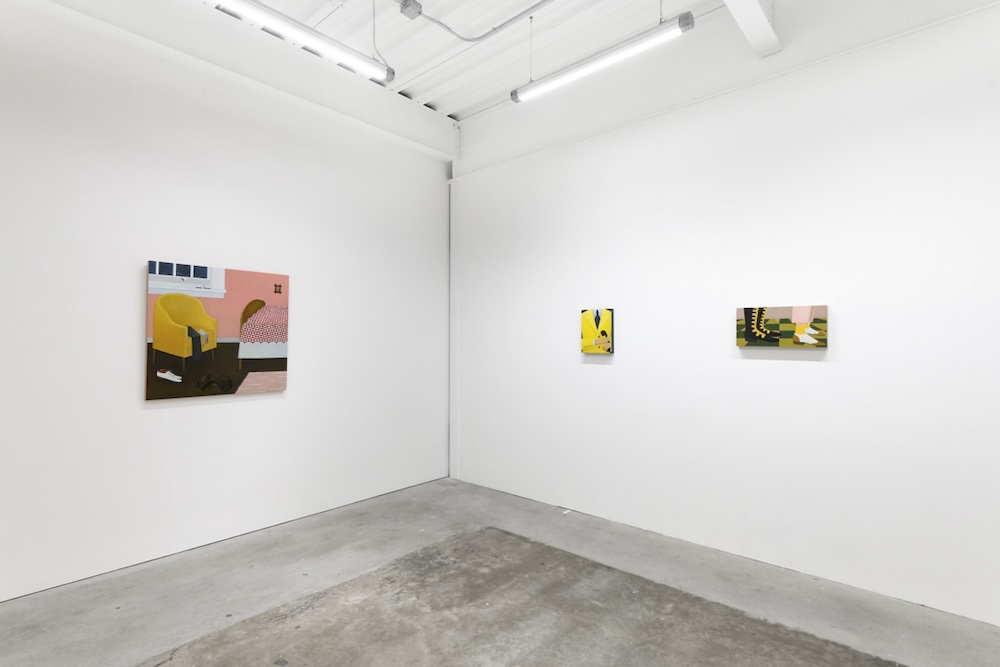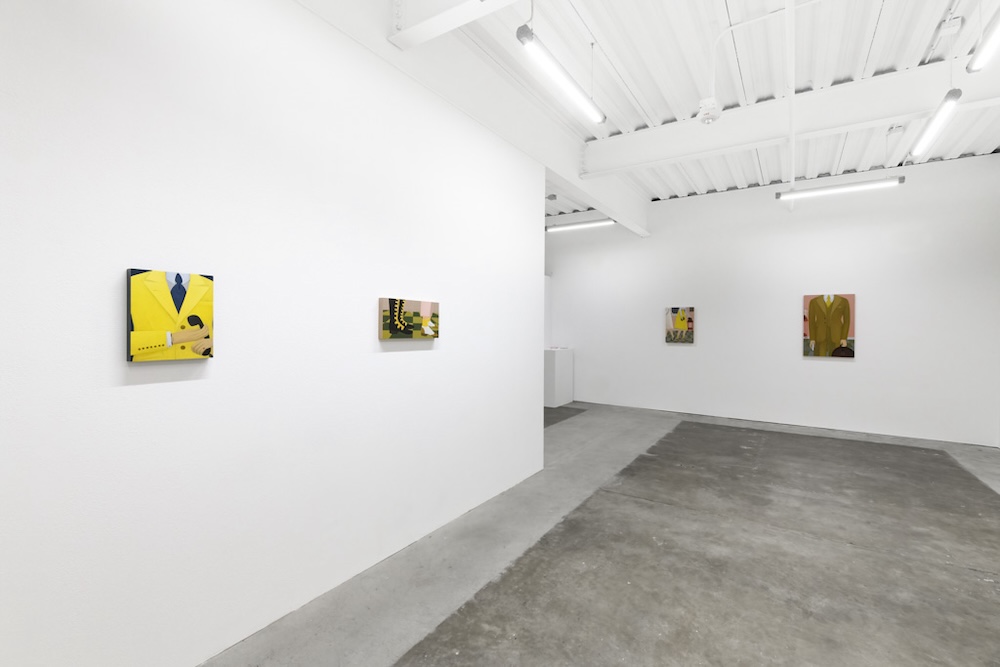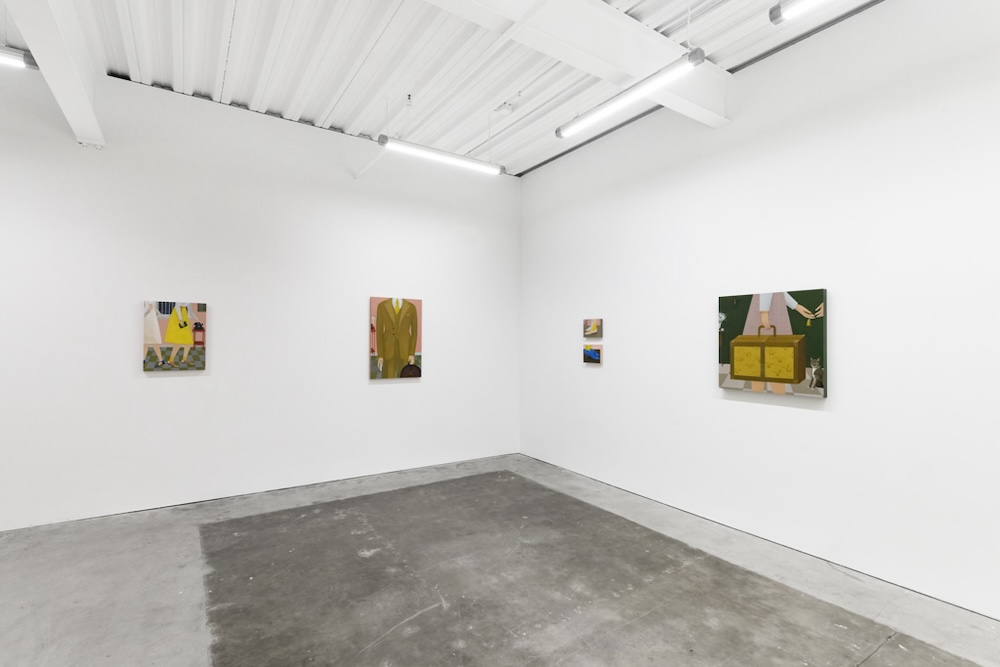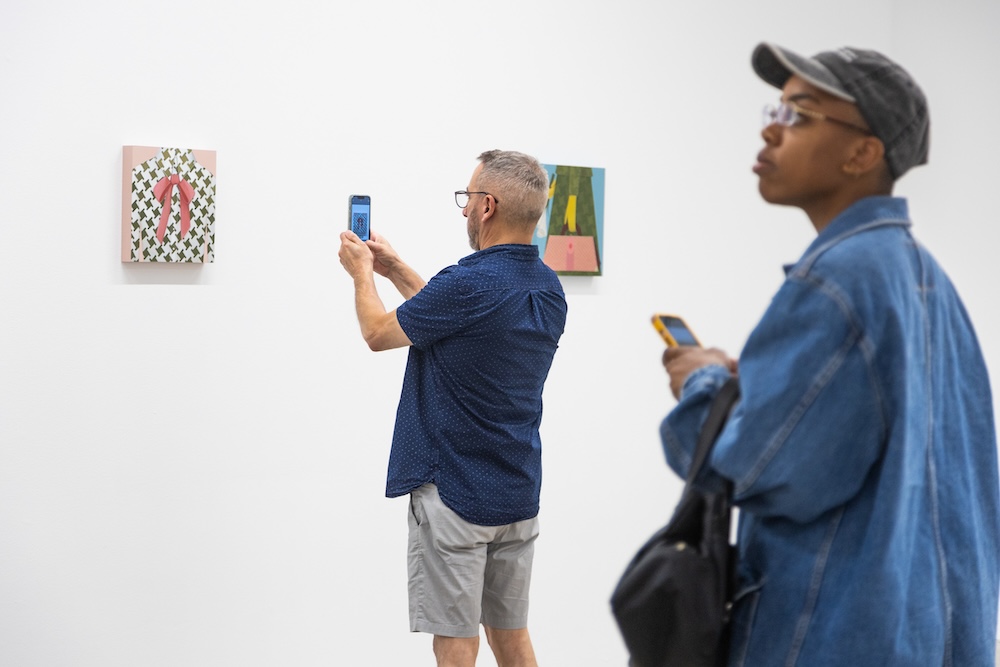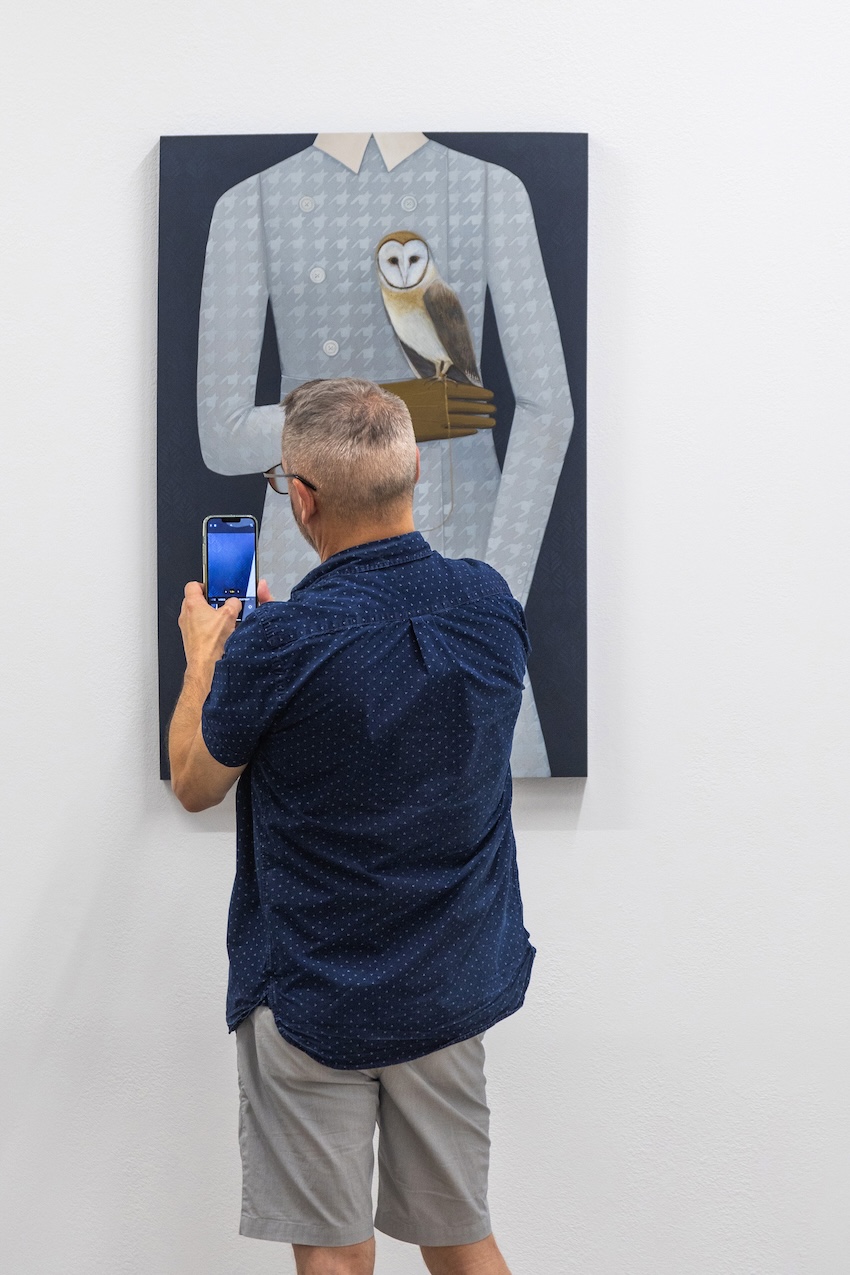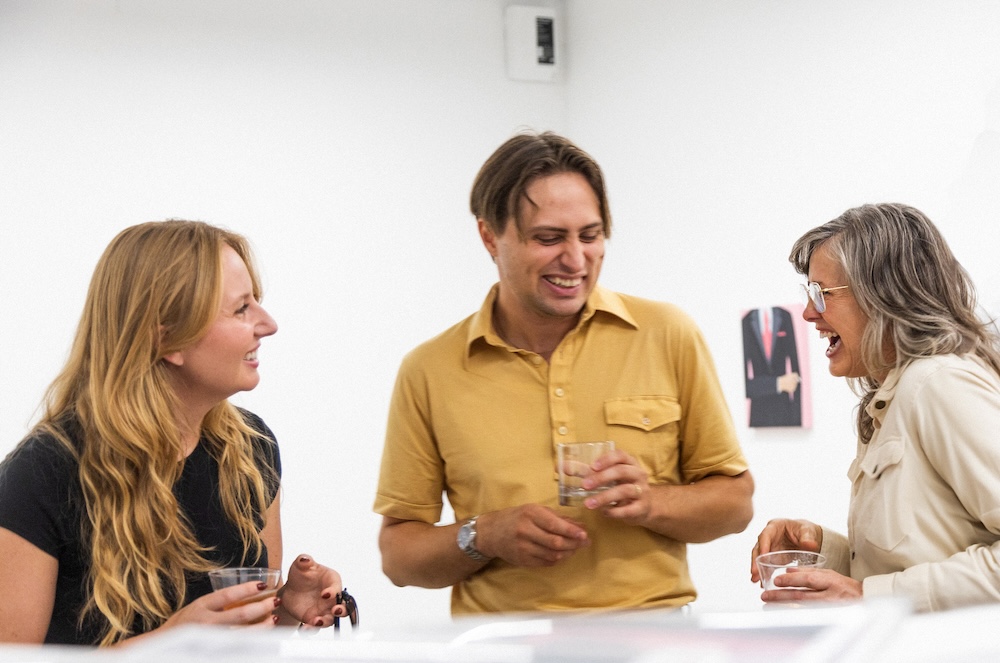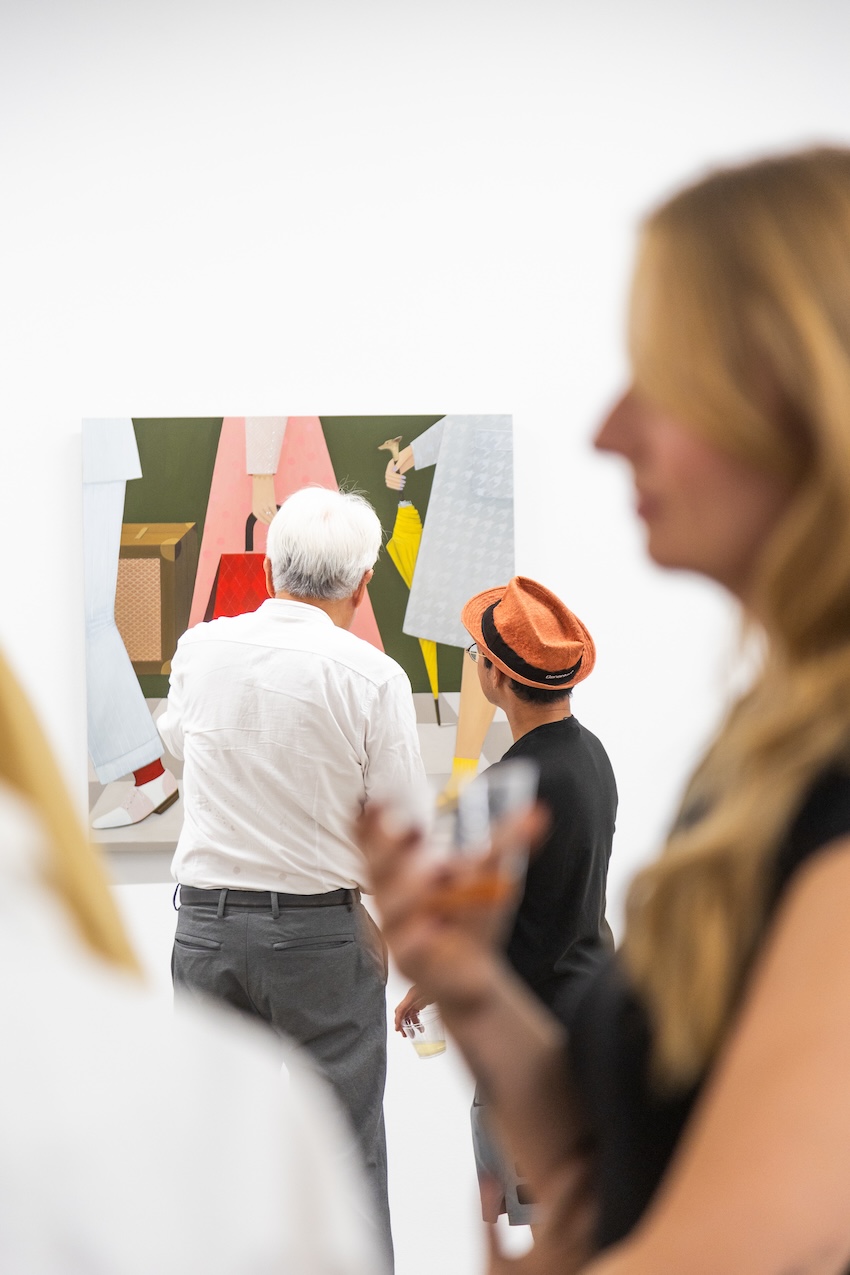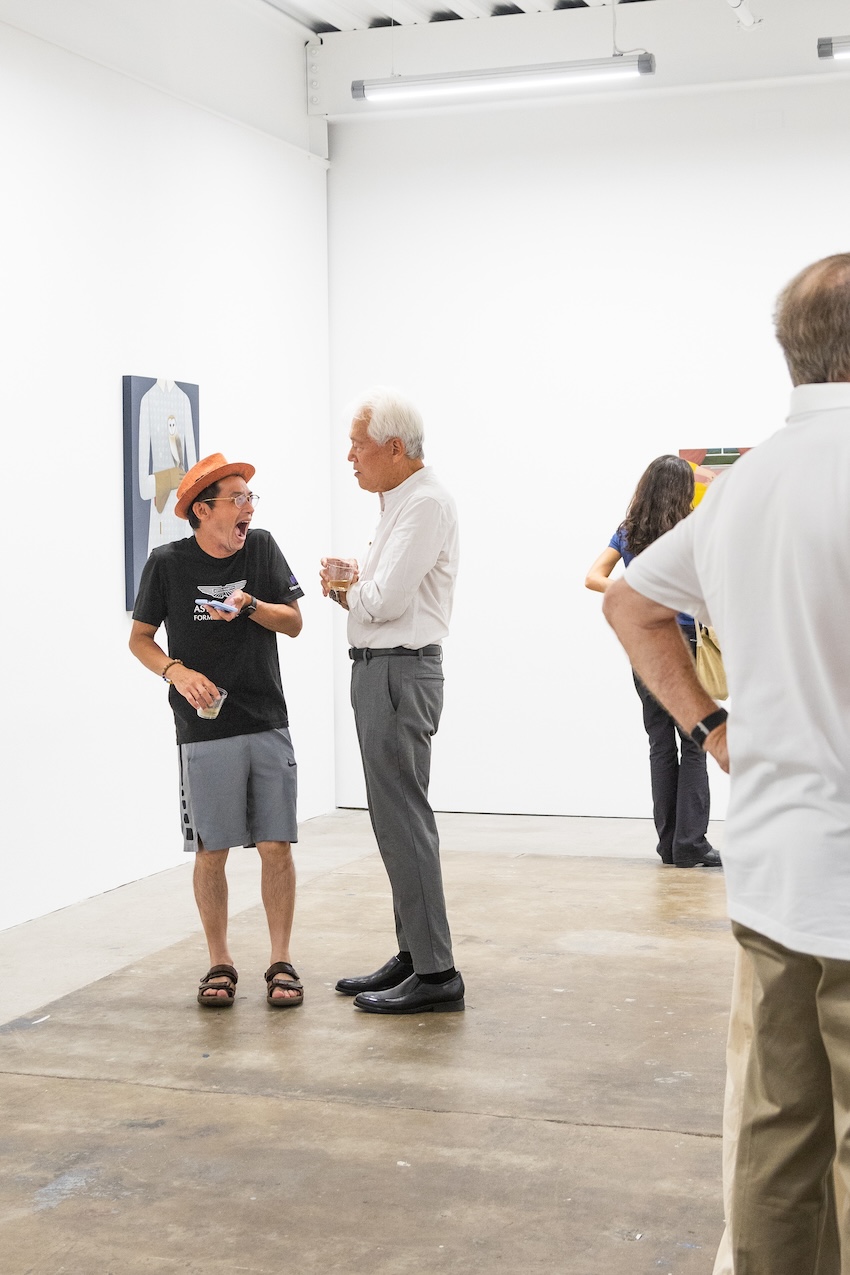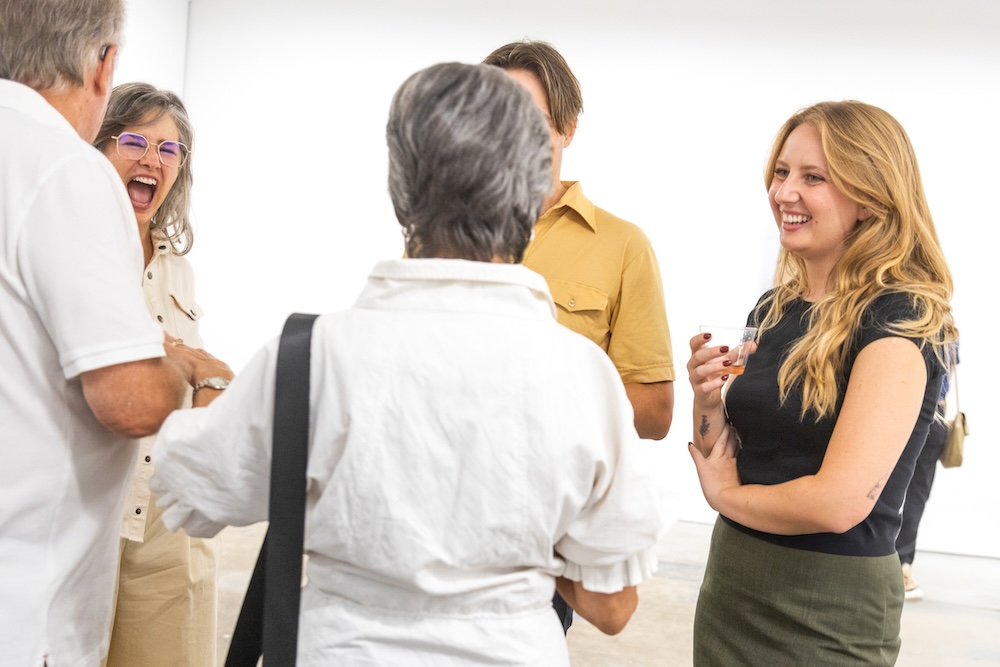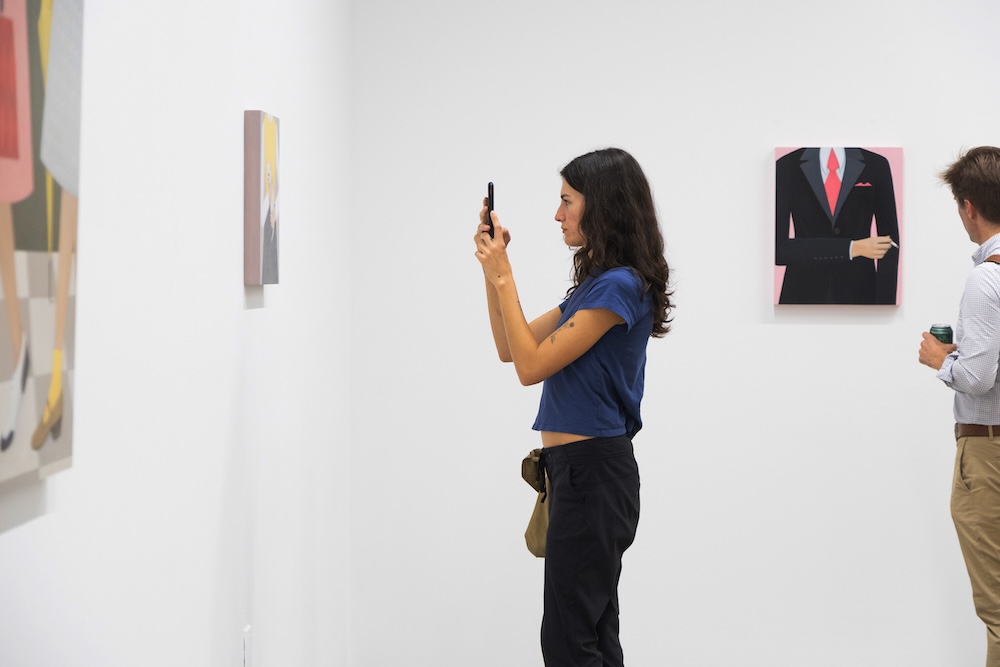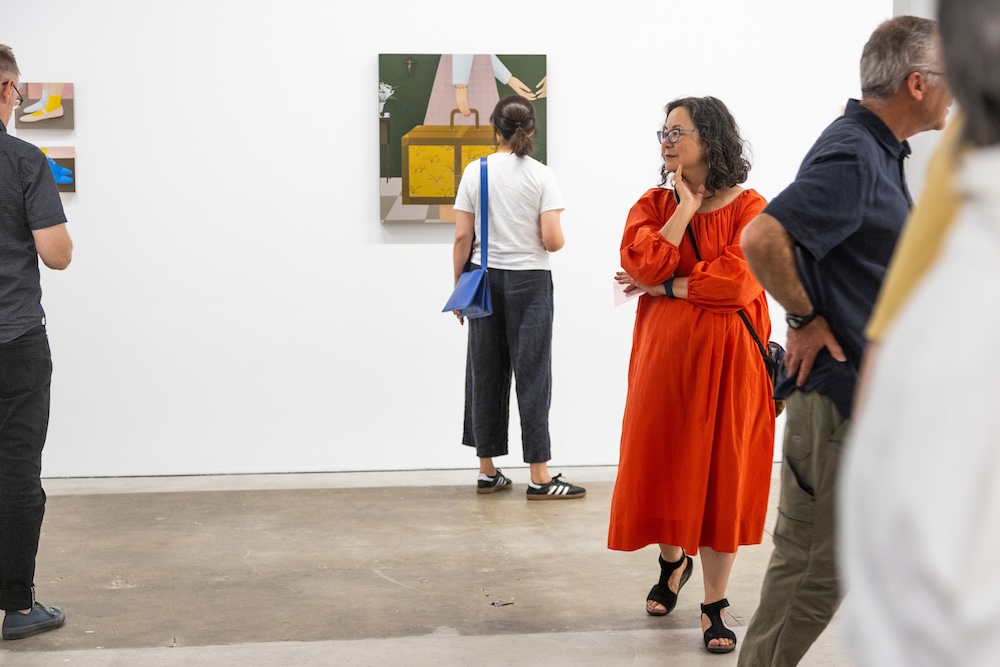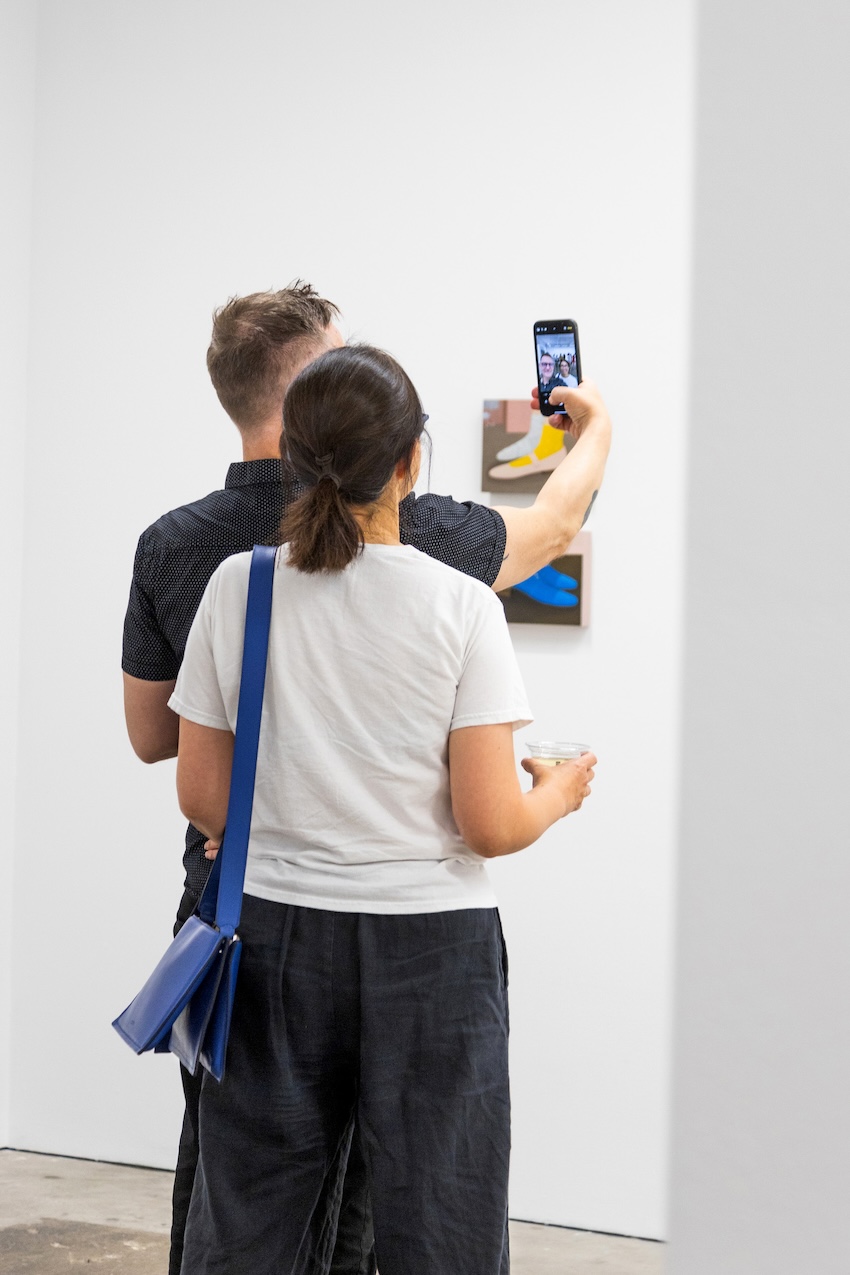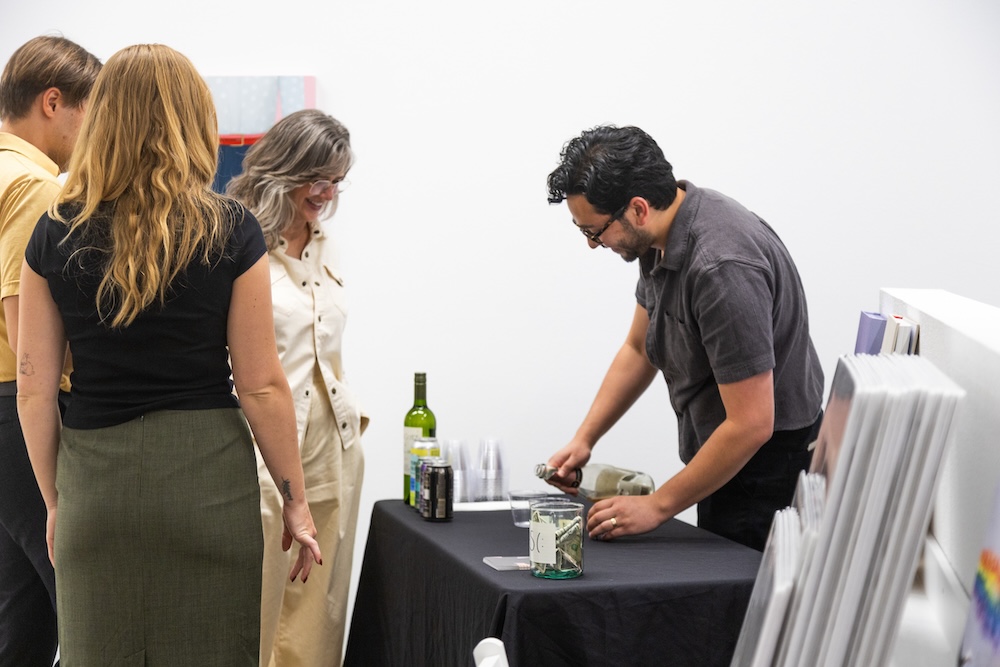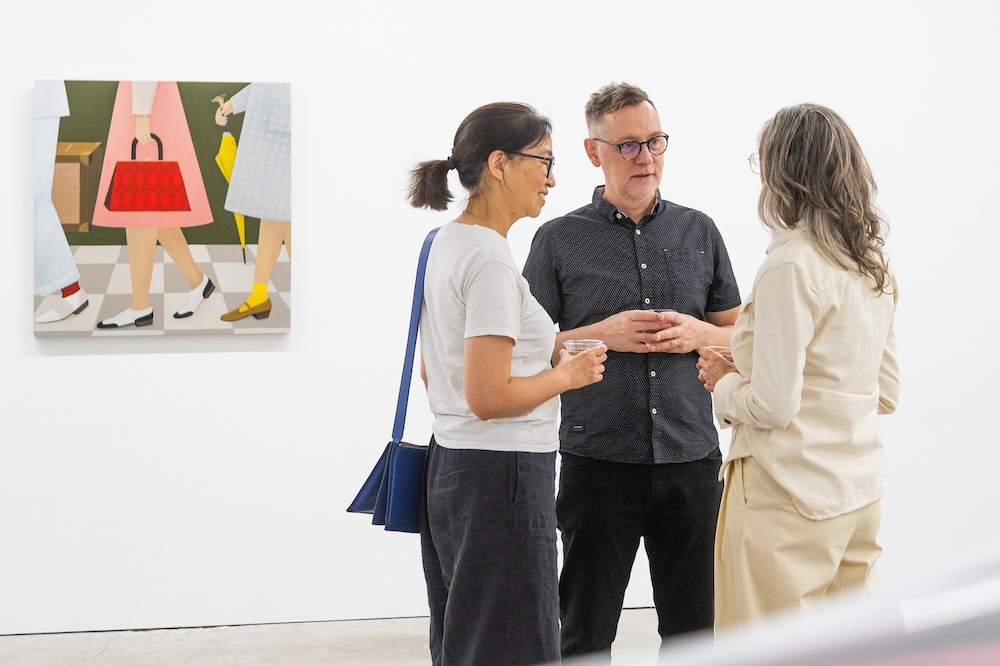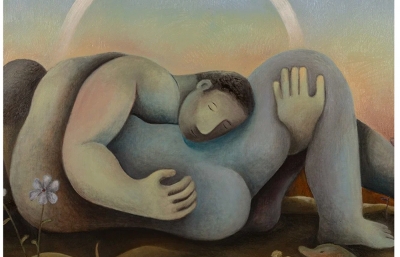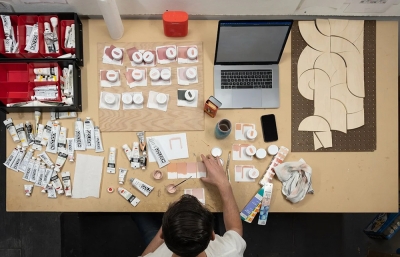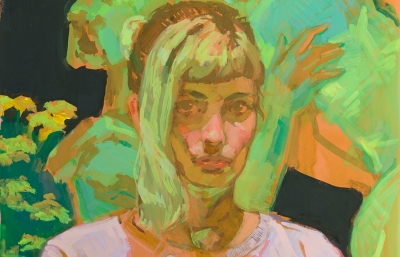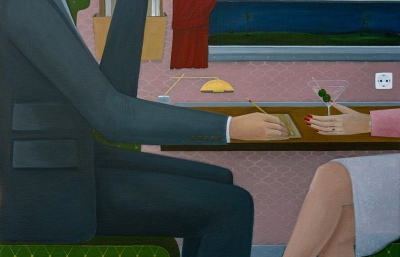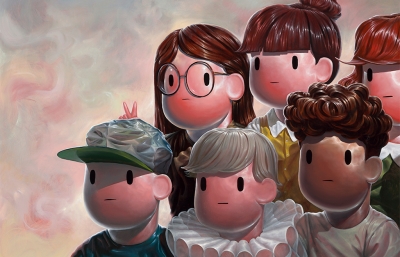What do we take away from an encounter with a stranger? Generally speaking, theWhat do we take away from an encounter with a stranger? Generally speaking, theoddities—the aspects of the encounter that are unsettling, abnormal. In her latest solo exhibition Close Encounters, Savannah-based artist Angela Burson considers her interest in strangersand transient spaces. Painting incomplete glimpses of strangers in undefined settings, Burson’sattention to details recreates a memory, a feeling, a dream of a chance encounter we didn’trealize we could recall.
Before her solo exhibition opened in San Francisco, Burson spoke with Hashimoto Contemporary’s Katherine Hamilto about the strange and memorable sources of inspiration for this exhibition as well as her creepiest close encounter.
Katherine Hamilton: Something to note about this new body of work is the appearance of the supernatural. In your earlier work, animals may have been witnesses or stand-ins for specters of a scene, but it feels like references to the paranormal or occult are much clearer in these newer works. Was that a conscious choice from the beginning?
Angela Burson: When I start a new painting I’m not sure where it’s going to take me. Sometimes an item or simple idea will take on a life of its own. In Ghost Feet, I began with two pairs of feet in a hallway but the composition needed a third element. I delicately added a small pair of feet hovering between the figures. Because my kids and I had recently been talking about a little girl spirit who lived in our Victorian house in Savannah, I decided to turn the feet into a ghost.
Another example of how an occult idea came about started with a painting of a pile of books on a dresser. One was titled Techniques of Fortune Telling, which I had recently seen on a friend’s coffee table. I quickly sketched two people engaged in a palm reading on a panel but left it untouched for almost a year. It became the painting Palm Reader.
That’s right, you had mentioned that the painting Palm Reader is one of your favorites in the series. Why?
I enjoyed designing the details of the intimate train car interior inspired by my European travels: the glimpse of a blurred landscape through the window, the outlet, the pinstripes and patterns. Also, I like the ambiguity of the figures. Are they strangers striking up a conversation on a train or do they know each other? The whole scene is mysterious.
When we spoke last year about your work, you mentioned Gertrude Abercrombie was one of your main artistic influences. I feel like that’s much more visible in this new series of works—the uncanny cats, the darker interiors, the simple yet striking rendering of figures in space. Do you feel like something has changed in yourself or your creative process to inspire these slightly more surreal scenes?
These changes were influenced by recent travels. I saw the Remedios Varo exhibition in Chicago, the Meret Oppenheim exhibition in New York, and viewed other surrealist paintings including the work of Gertrude Abercrombie. I also went to Spain and saw so many amazing paintings. The painting 715 shows a crucifix in a dark hallway and was inspired by my trip to Spain. It reminded me of my Grandparent’s house where there were many pictures of Jesus and praying hands.
You mentioned that a few of the scenes are inspired by your father, or rather, your father’s recent trip to the hospital. Are there other hidden narratives in the works youwant to share?
I was sent a photo of my father sitting on a hospital bed in these bright yellow socks. Thatinspired a few pairs of yellow socks in this recent group of works. There are always things in mylife that I put into the paintings but I let the objects assemble in the work and create a narrativeof their own. The photo of my Dad in the hospital with bright yellow socks was an inspiration butnot a narrative itself.
That being said, there is a narrative related to my Dad in the hospital that recurs—the injuredbody part. I had surgery on my feet when I was 9 or 10 and spent a week in the hospital andspent the following summer recovering. I also had injuries from a car wreck and had brokenbones and a bandaged arm. Those experiences left an impression on me and I think that is why I’m drawn to bandages. When I see someone injured I wonder what happened to them andwhat their experience was like.
The Martini Drinker is a character who appears frequently in your works. You had mentioned listening to the audiobook of The Talented Mr. Ripley while painting that work.Would you say you find yourself referencing narratives or works of fiction often?
I listen to all kinds of things: artist biographies, fiction, non-fiction, podcasts, and sometimesmusic. In an indirect way, I am influenced by what I’m listening to but I’m not directly referencing the narrative. Some paintings I associate with books, like the martini drinker and Talented Mr.Ripley. The well dressed characters in that book might have worked their way into my painting. I was listening to The Sea, The Sea by Iris Murdoch and kept making windows with a dark ocean outside. But it also is relevant as I live on the coast and think of sea levels rising and the climate crisis.
I’m also curious about the work with the owl…
I wanted to revisit a painting I made inspired by a photograph of my kids holding owls, called We Held Owls. I’m intrigued by the conflicting symbolism of the owl: wisdom, power, wealth, guardians of the night, a loved one being near, bad luck, omens of death, and messengers of witches. They’re also predators with keen senses that humans don’t possess, which makes them interesting.
A through line in your work has always been about encountering strangers and the traces of them that linger in our memories. There’s this idea that we and they pass through spaces leaving an intangible mark on others wherever we go. As such, you mentioned that certain characters cross through paintings, inhabiting one space after another, and yet they retain a certain amount of mystique and anonymity. Do these strangers become full-fledged people in your mind or do you still think of them as moving bodies of patterns?
I think of these “strangers” as my cast of characters who play out scenarios. They are not portraits of specific persons but are more like anonymous “actors.” They might veil a personal narrative or wear something significant like the yellow socks. The figures are made up of patterns and colors that create a narrative, time, mood or embody a mysterious presence.
I also wanted to, briefly, touch on chaos and order in your work. Disorder and debris are the evidence of living—this is something you make evident in your interior scene paintings. Where and when do you most frequently encounter these “signs of life” in your own life? And, what makes these messes so captivating?
That is a funny question! Messes are everywhere in my life. It’s ironic that I spend a lot of time dismantling messes in my home and then preserve them in my paintings! My sister has the most interesting messes and I am constantly inspired by how weird they are. Or my son’s. When my son was in college he would come over when I was at work. I would come home and detect exactly what he had done by observing a trail beginning with the cereal bowl and wrapper on the coffee table to the glasses in the kitchen and the rumped bedspread in his old room. A snack, a TV show, a nap, a drink, then back to class.
The exhibition is called Close Encounters, referencing a closer encounter with a stranger, with another world. What is the story of your closest encounter?
This title references many different types of close encounters: with family, ghosts, strangers and accidents.
My closest encounter with a ghost was when a dark shadow walked through our house. He created a dappled muted gray light, kind of like a shadow. My son and I both saw him. He came in and walked through our living room, went to the kitchen then out the back door. He left and never came back. “Did you see that?” I asked. “Yes,” my son said.
Angela Burson’s solo exhibition Close Encounters is on view at Hashimoto Contemporary San Francisco through October 26th, 2024. Installation images by Shaun Roberts, opening night photos by Genevieve Parker.

